
- TRAVEL Where to Go When to Go What to Do Tips and Advice Where to Stay
- CULTURE Sports Arts & Entertainment Traditions Cultural Tips History
- FOOD & DRINKS Where to Eat Bars and Brewery Regional Specialty
- SPECIAL EVENTS Festivals Shows & Concerts Tournaments & Competitions Exhibits
- ANIME Anime Spots Anime Events Recommendations Anime Tours
- LUXURY Experiences Luxury Accommodations Dining Luxury Tours


DISCOVER THE HISTORY, CULTURE AND AUTHENTIC ARTIFACTS OF SAMURAI & WHERE TO EXPERIENCE IT IN JAPAN!
Former samurai districts in japan.
Matsue Samurai District

Kakunodate Samurai District

Kitsuki Samurai District

Hagi Former Castle Town

Hagi City stood as the political power-center of the Mori Clan for 250 years. Hagi Castle stands in the middle of the town. Most of the castle was lost over the years, but you can still see the original foundation and stone walls. The rest is a reconstruction. In town, head to the Hagi Museum or Kuyama Art Museum where you can see authentic samurai swords, artifacts, and armor. Click Here for More Information
SAMURAI THEME PARKS AND MUSEUMS
Tochigi Prefecture (3 hours from Tokyo Station): Nikko Edomura

Kyoto City : Toei Uzumasa Eigamura (aka Kyoto Studio Park or Movie Land)

Hokkaido : Noboribetsu Date Jidaimura

Tokyo : Shinjuku Samurai Museum

If you’re looking for a samurai experience in Tokyo, look no further than the Shinjuku Samurai Museum in Kabukicho. The museum includes a tour of authentic samurai katana, armor, and other weaponry followed by a choreographed swordsmanship display. After the tour, you can try on a samurai helmet and armor or take a samurai sword training class. Click Here for More Information
10 INTERESTING FACTS ABOUT SAMURAI

1. Live by the Code; Die by the Code Samurai observed strict manners collectively known as Bushido , “the way of the warrior.” Although this custom has ancient origins, the Bushido code wasn’t unified until sometime between the 16th and the 20th century. Nitobe Inazo is credited for finally summing up the code in his book Bushido: The Soul of Japan . The Bushido covers everything from ritual suicide for disgraced warriors ( seppuku ) to how one should care for a horse. 2. The Pen is Mightier Part of the Bushido code dictates that all samurai must be master fighters and highly educated. Every samurai studied reading, writing, mathematics, science, and even arts like tea ceremony and flower arrangement. During peacetime, the samurai were the scholars of Japan. They even studied in foreign countries and opened schools upon their returns from abroad. After the disbandment of samurai during the Meiji Restoration, some became high ranking officers in the newly formed army. However, many more became journalists, entrepreneurs (like the Mitsubishi family), and politicians. 3. The Not So Elite Few Popular culture makes it seem as though the honor of becoming a samurai belonged to only a select few. In fact, it’s quite the opposite. Different reports estimate that at their peak samurai made up between 6 to 10% of the population of Japan. There were so many that it’s thought every living Japanese person has a samurai in their family tree! 4. Category is: Warrior Extravaganza Realness You may already be aware that samurai armor was anything but simple. The several pieces were made from ornately decorated leather, silk, and iron. The helmets for high-ranking samurai often included masks with beards and larger than life horns and headpieces. The lavish accessories served two purposes. First, so you could differentiate between friend and foe in battle, and second to intimidate your enemies. 5. Practical and Fashionable Speaking of those helmets, it’s thought that the samurai wore their hair in top-knots for practical purposes. The style kept your hair out of your eyes, and by shaving just the scalp your helmet stayed on easier. However, the samurai were fierce trend-setters, and soon even non-samurai styled their hair the same way. 6. Different types of swords Most people can easily recognize the katana samurai sword, but they actually used three types in total. The first samurai often carried chokuto , which was smaller and lighter than the European longsword. Chokuto evolved into the katana sword, but most samurai carried a short companion sword known as a wakizashi . 7. Weapons other than swords The image of a samurai blocking a barrage of bullets with his blade might look cool, but it’s completely inaccurate. As warfare technology advanced, so did the weaponry at a samurai’s disposal. Group fighting tactics made spears more practical than swords, and gunpowder led them to abandon bows for rifles and cannons. 8. Sisters are Doing it for Themselves The term “samurai” strictly refers to men, but there were female counterparts within this social class. The women warriors of Japan were known as the onna-bugeisha , and they fought right alongside the men in combat. The history books mention them disproportionately less which led to the thought that there was only a handful of them. However, archeological digs of ancient battlefields have found that women made up to about 30% of the average army. 9. The Samurai Might Not Have Exactly Been Japanese Samurai and the descendants of samurai often didn’t look like the rest of the Japanese population. They were known to be much hairier, some sporting great mustaches, and their facial features were noticeably different. This has led many historians to believe that the original samurai were actually the indigenous Ainu people from northern Japan. The Ainu suffered a great deal of discrimination, but they might have been the most instrumental in Japan’s creation. 10. In Fact, Some Samurai Weren’t from Japan at all! Although Japanese nobles made up most of the samurai population, it wasn’t necessarily a requirement to be noble or Japanese. The shogunate reserved the right to dub anyone a samurai, and some non-Japanese people enjoyed the honor. Famous foreign samurai include Yasuke (likely Mozambique), Kim Yeocheol ( Korea ), William Adams (England), and Jan Joosten van Lodensteyn (Holland). Find out how you can experience samurai culture for yourself by clicking the link below!
CLICK HERE TO SEE OUR SAMURAI, GARDENS, & ARTS TOURS

NORTHERN OR SOUTHERN JAPAN? WHICH TO VISIT NEXT
TRAVEL | Where to Go
Article | April 22nd, 2024 | May Hamamoto
Can’t get enough of Japan after visiting Tokyo, Kyoto, and Osaka, but are torn between the charms ......

12 OF OUR FAVORITE JAPANESE FESTIVALS
SPECIAL EVENTS | Festivals
Article | April 11th, 2024 | Dayna Hannah
Attending a Japanese festival is an experience unlike any other! Here are our favorite annual events......

WHEN TO SEE CHERRY BLOSSOMS BLOOM IN JAPAN | 2024
TRAVEL | When to Go
Article | March 29th, 2024 | Dayna Hannah
From Okinawa to Hokkaido, here's where and when to see cherry blossoms in Japan.......
Search Group Tour
2024, 2025 & 2026 group tour calendar, subscribe to blog via email.
Your Email Address
POPULAR ARTICLES

TOP PLACES TO SEE IN JAPAN IN 2024: 20 CITIES WE LOVE

50 THINGS TO DO IN JAPAN

WHEN IS THE BEST TIME TO VISIT JAPAN?

WHAT IS KOBE BEEF?

WHAT IS GEISHA

10 THINGS TO DO IN SHIBUYA

JAPANESE FOOD
Samurai History & Culture Tours
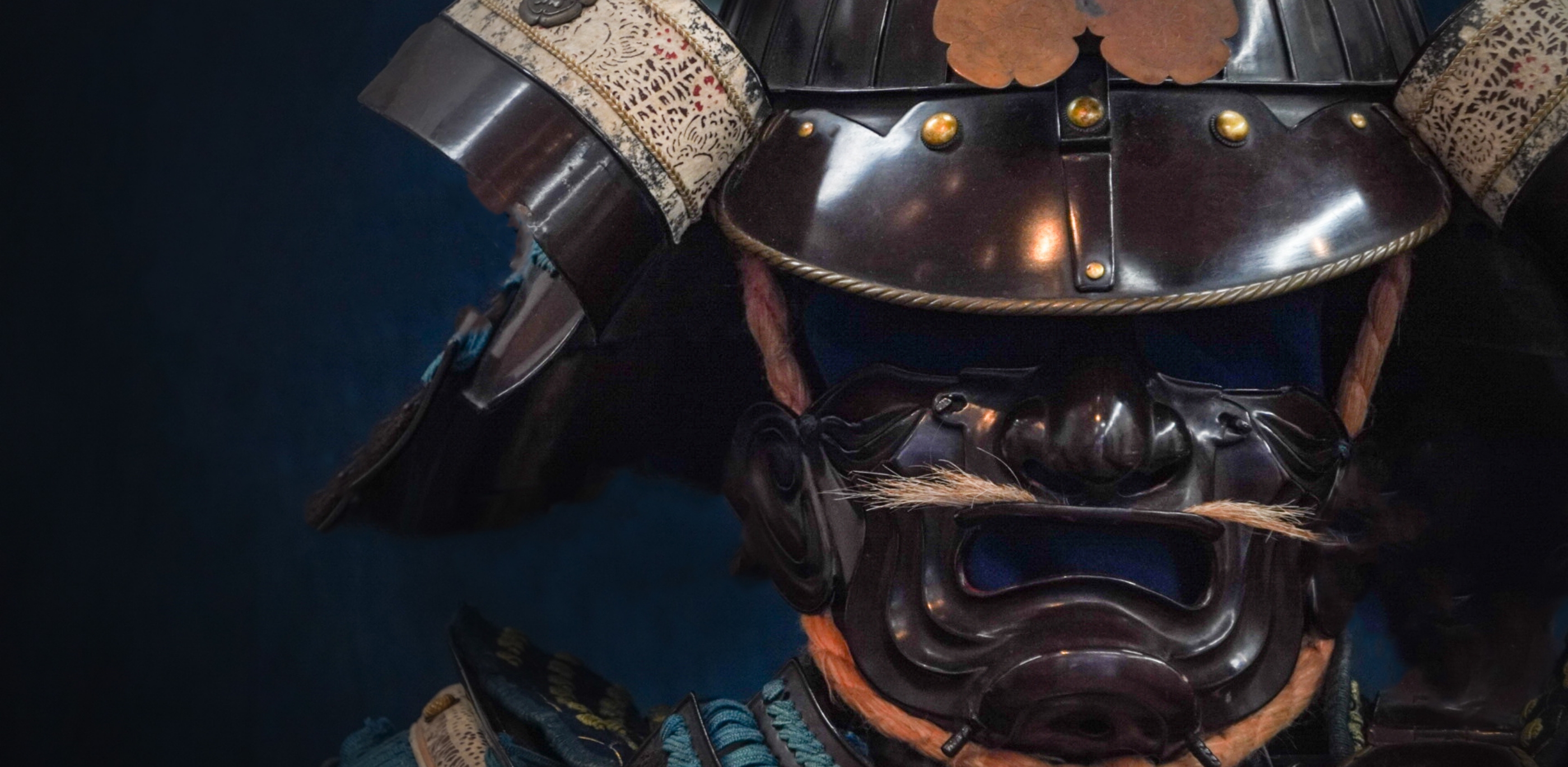
Discover and Experience the Authentic History and Culture of the Samurai
Samurai History & Culture Tours is an original and innovative tour plan and order-made samurai-centric tourism program offering authentic cultural pursuits, immersive experiences and the opportunity to discover, learn and experience a range of credible and legitimate samurai history and culture arts and elements while in Japan.
Private Tours
What is Samurai and Where to Experience Bushido in Japan

If you are interested in Japanese history , this may not be your first time to hear the word Samurai . But who are they? How did they originate, thrive and eventually disappear in the long history? Here you can find a brief history of samurai and understand its role, and how they became so powerful in Japan. We will also introduce the basic concept of Bushido , the way of the samurai and the best experiences that you can find in Japan!
1.What are Samurai?
2. what is bushido, 3. best samurai experiences in japan, other articles you may like.
Samurai, also known as Bushi , are Japanese aristocratic warriors. They first appeared in Japanese history around the 10th century, and held significant power as the highest social caste until the end of the Edo period in 1868.
During the Heian Period (794-1185) , Imperial nobles and wealthy landowners started to hire samurai as their armed supporters for the purpose of their own protection. After the Kamakura Shogunate, the first feudal military government in Japan was established by Minamotono Yoritomo in 1192, samurai started to be treated as a loyal retainer who officially served Shogun, the military commander of the Shogunate.
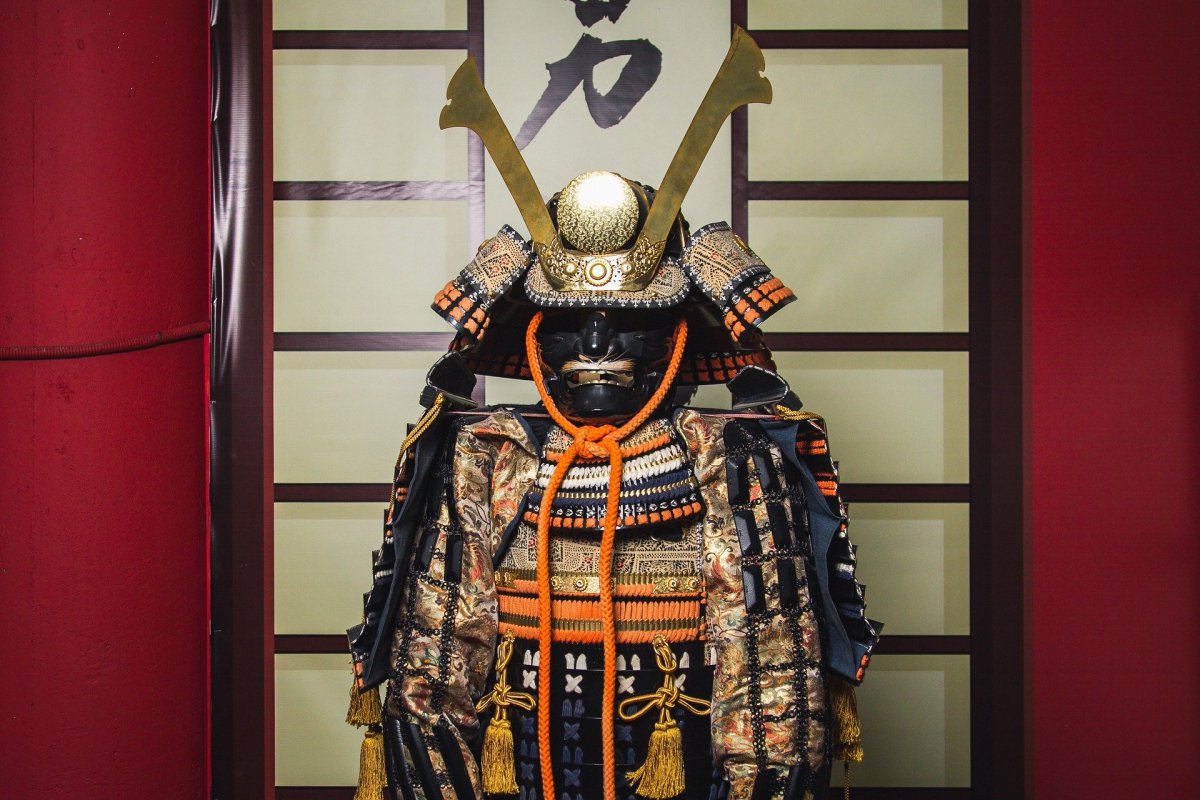
During the Sengoku Period (1467-1590), Japan entered a chaotic period which is often characterized by a series of civil wars and provincial battles among powerful samurai warriors. They are called Daimyo (also known as feudal lords), and fought one another to secure their territory with an ambition to unite the entire country. It was eventually accomplished by Toyotomi Hideyoshi, a famous samurai warrior in 1590.
After the establishment of the Tokugawa Shogunate in 1603, Samurai were ranked at the top of the new social caste system. This hierarchy consists of four distinctive social classes including samurai, farmers, artisans, and merchants. Samurai were exclusively allowed to own their swords and family name, and served feudal lords who ruled independent domains called Han (藩), which is similar to prefectures today.
In 1868, the Tokugawa Shogunate was finally overthrown and Japan entered the new period known as the Meiji period . While a series of new policies were implemented by the new government which encouraged westernization in the whole country, the previous social caste system was officially abolished and samurai lost their privileges.
Bushido , also known as the way of the warrior, refers to the moral code of chivalry conducted by samurai. It can be divided into two separate words: Bushi which means samurai, and do which means a way. In general, it consists of the seven virtues below that should be followed by samurai:
- 義 (Gi) Justice
- 勇 (Yu) Courage
- 仁 (Jin) Benevolence, Mercy
- 礼 (Rei) Respect
- 誠 (Makoto) Honesty
- 名誉 (Meiyo) Honor
- 忠義 (Chu-gi) Loyalty
This unique and strict code was used as a fundamental principle of self-discipline, molarity, respectful behaviors and loyalty to their masters among samurai warriors.
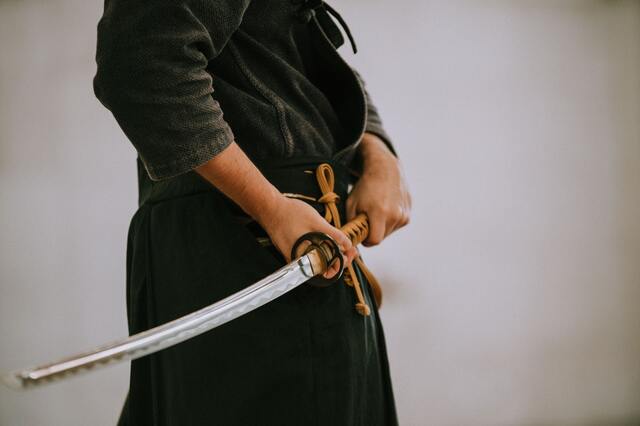
There are some experiences where you can actually learn and practice bushido in Japan. Some experiences are taught by a samurai descendant to get the authentic experience, but also there are some tours where you can go and wear the samurai suits and take pictures. Pick up the best experience that matches your needs!
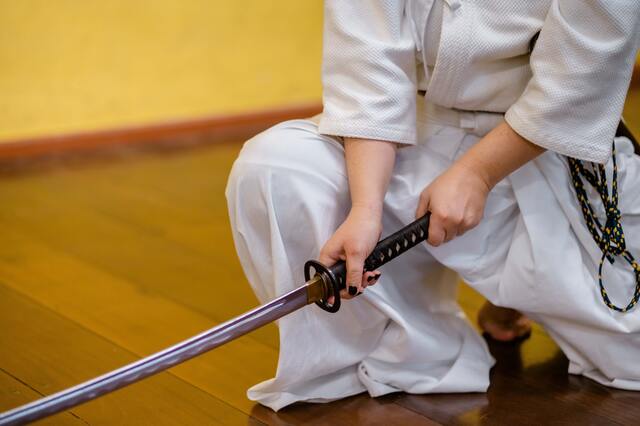
- Train your inner spirit in a samurai & ninja training (Tokyo ) This is a samurai and ninja training class instructed by a professional and enthusiastic martial arts teacher. During the class, not only samurai training ( kenjutsu and Iai ), it will be focused on mental strength and developing an inner body sense as well. This 2 hours class includes both samurai and ninja experience and zen meditation.
- Make your own samurai knife with a certified swordsmith (Gifu) Learn how to make your own samurai knife from one of the most important swordsmiths in Japan! Although usually it’s said you will need at least 10 years of training to make a good knife in the traditional way, you can learn and make your one-and-only knife in just one day at this workshop.
- Cool Kyoto walking tour with the Last Samurai (Kyoto) Explore the beautiful city of Kyoto with Samurai Joe, an incredibly knowledgeable guide who takes you on an unforgettable tour around the historic city. His charismatic and humorous character attracts many people from all over the world and it’s one of the most popular tours for samurai experiences. He also offers the online tour during the pandemic so that you can enjoy Kyoto with him while staying at home!
- Dress up like a samurai & enjoy samurai dance (Tokyo) Not only can you wear the samurai outfit and take pictures, but also you can learn the traditional dance that samurai used to dance before the battle called kenbu (sword dance). Learn the deep insight of samurai spirits from professionals while enjoying dressing up like samurai!
- Enjoy samurai experience at dojo (Tokyo) Samurai descendants teach you how to be a proper samurai including learning the philosophy and how to use the katana (sword). If you want to get a more authentic experience and learn deeply about samurai culture rather than just having fun, this workshop will be a perfect choice to be on your bucket list!
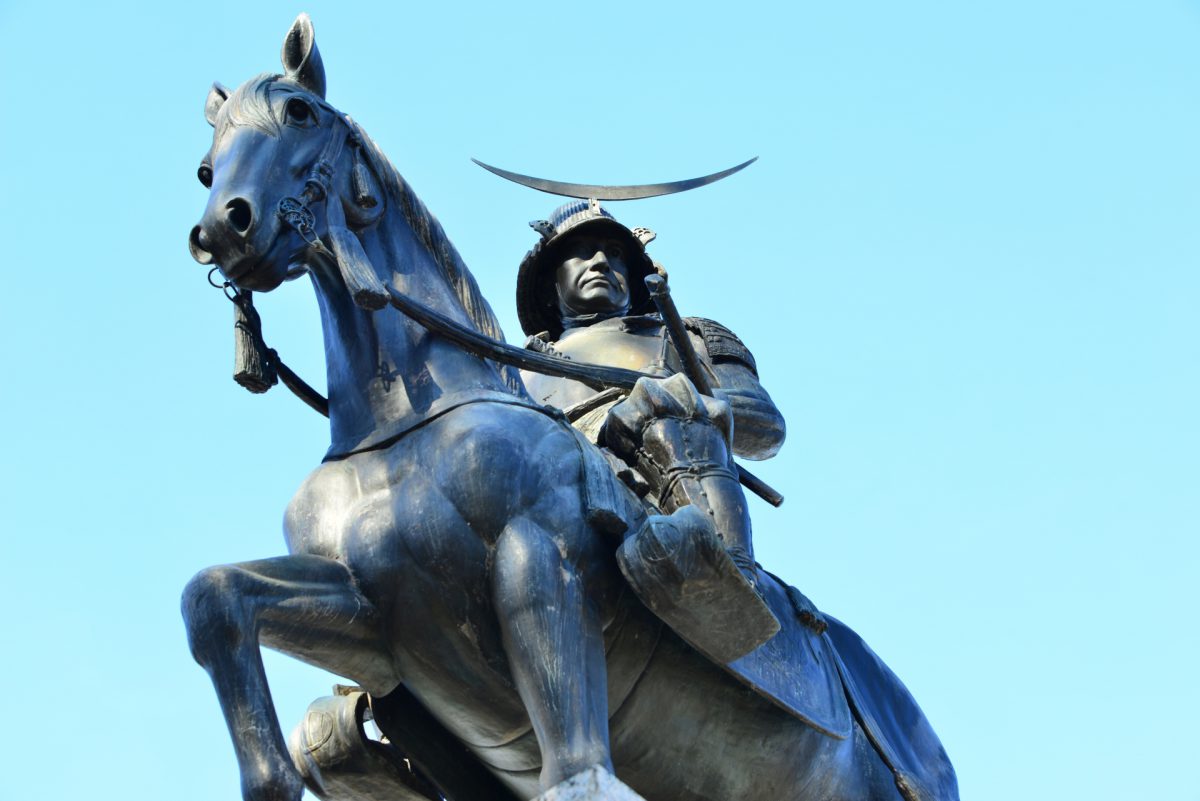
Although you can’t see real samurai anymore, there are exciting tourist spots and tours around Japan that offer incredible samurai experiences. Learning samurai spirits will enrich your mind and thoughts, why don’t you join one of the samurai experiences we introduced above?
Follow us on Instagram , Facebook and Twitter for more travel inspiration. Or tag us to get featured!
Happy traveling!
Stay informed of the best travel tips to Japan, the most exciting things to do and see, and the top experiences to have with the Japan Wonder Travel Newsletter. Every week we will introduce you to our latest content.

Miho Shimizu is a Japanese freelance writer settled in Shizuoka with her husband and two rabbits. Fascinated with travelling at the age of 18, she has spent most of her long holidays exploring incredible spots around Japan. Also love to listen to music, draw, and read novels over a cup of green tea.
This post may contain some affiliate links. When you click through and make a purchase we may receive some commission, at no extra costs to you.
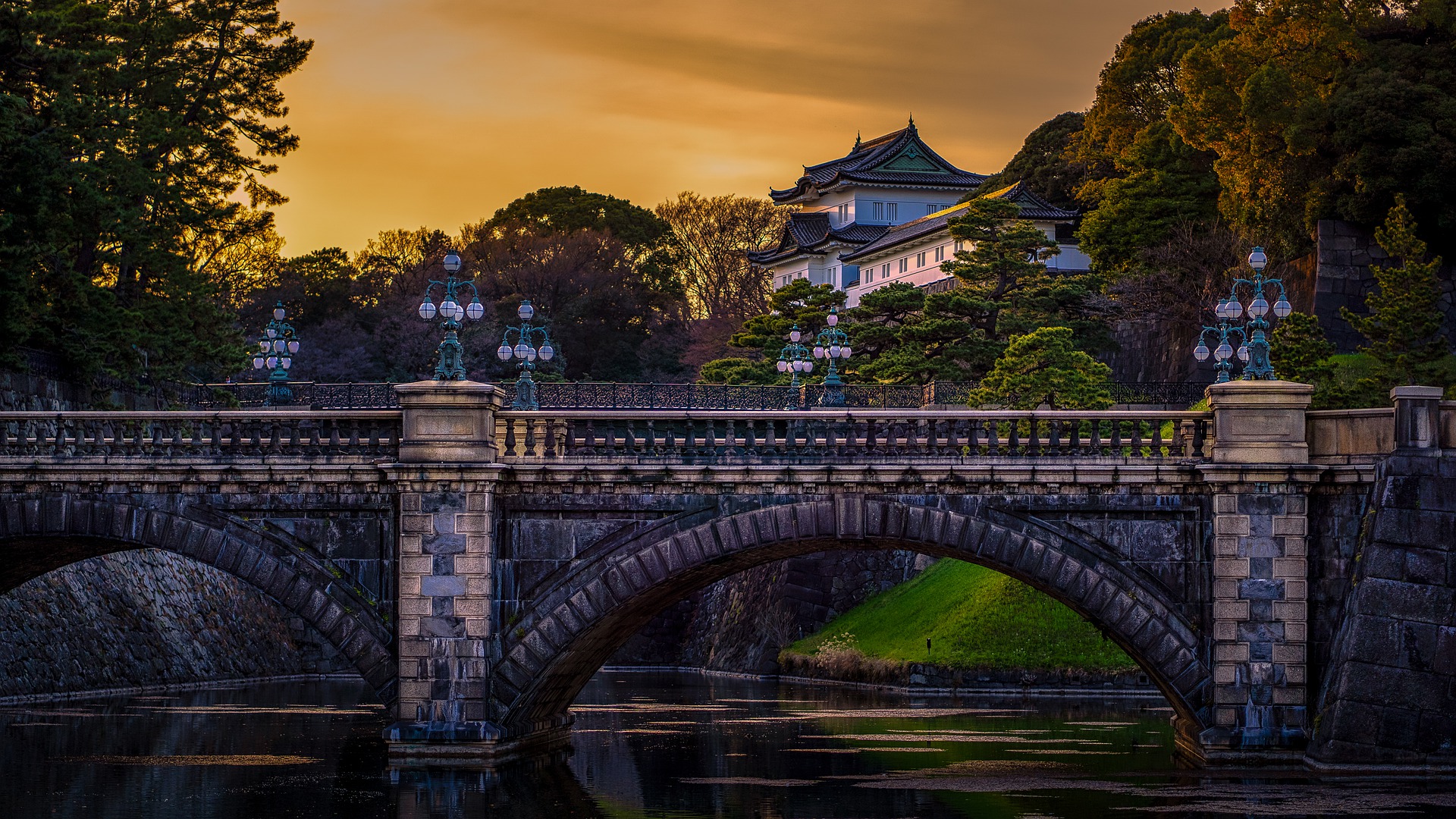
- Popular destinations
- Hidden places in Japan
- Tours and workshop
- Food and drink in Japan
- Itinerary in Japan
- Places to visit in Tokyo
- Food and drink in Tokyo
- Seasonal events
- Tours & workshops
- Tokyo This Week
- Day trip from Tokyo
- Itinerary in Tokyo
- Places to visit in Kyoto
- Food and drink in Kyoto
- Itinerary in Kyoto
- Day trip from Kyoto
- Travel tips
- Accommodation
- Cultural tips
- Transportation
- Tokyo Tours
- Kyoto Tours
- Kimono Rental
- Fukushima Tours
- Mount Fuji Tours
- Tour Package
- Media Kit(English/日本語)
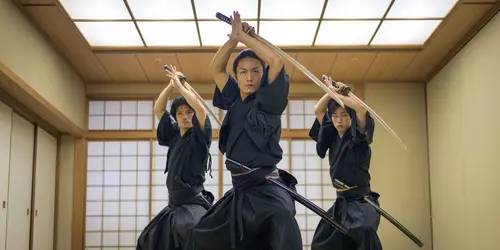
Japanese martial arts athlete training samourai kendo
©Fabio Formaggio/123RF
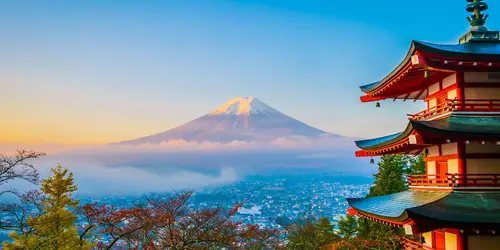
Mount Fuji from Kawaguchiko pagoda
©siraphol/123RF
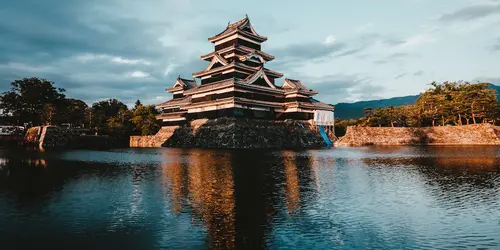
Matsumoto Castle, also known as the "Crow Castle" due to its black exterior
©Claire Chang/123RF
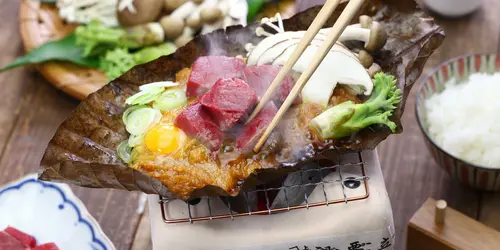
Enjoy tasty Hida beef in Takayama
©cokemomo/123RF
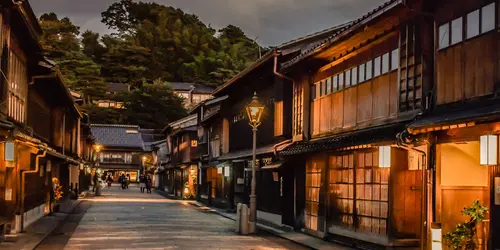
Traditional geisha quarter with old wooden houses in Kanazawa, Japan
©passionphotography/123RF
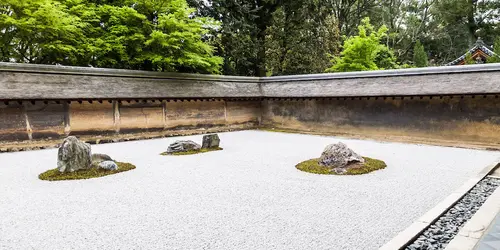
Visit Ryoan-ji, Kyoto, the most famous rock and zen garden in Japan
©Philippe Voisin
- Travel insurance
- Japan Experience
Path of the Samurai
- Duration : 16 days
- Locations : Tokyo, Kawaguchiko, Matsumoto, Takayama, Kanazawa, Kyoto
- Add to favorites
This Japan tour will have you follow in the footsteps of the famous Japanese warriors .
Dive into the heart of historical Japan at Matsumoto Castle with our guide Sylvain or into the treasures of Kyoto , the former imperial capital. After Tokyo , a mixture of modernity and tradition , discover Japan's mountains: Mount Fuji and the Japanese Alps .
An original organised trip, for young and old!
16-day itinerary
- Departure city/Airport : Tokyo (Narita : NRT or Haneda : HND )
- Tokyo (4 nights)
- Kawaguchiko - Mount Fuji (1 night)
- Matsumoto (2 nights)
- Takayama (1 night)
- Kanazawa (2 nights)
- Osaka (2 nights)
- Kyoto (3 nights)
- Return city/Airport : Osaka (Kansai International Airport : KIX )
Please find below the itinerary details.
Tour length : 15 nights / 16 days ( + 1 day at the beginning if you leave from Europe )
PLEASE NOTE : The departure and end dates shown on this page only apply to your stay in Japan. You must therefore leave Europe the day before the first day of your tour. The date of your return flight and that of your return to Europe are identical due to the time difference.
Example :
- Departure from Europe : January 1st
- Arrival in Tokyo ( = the date to be selected in the calendar when booking ) : January 2nd
- Return flight from NRT or HND airport / Return to Europe : January 17th
Please note that flights are not included in the price of your tour.
Interested in this tour but would like to spend a night in a Buddhist temple in Mount Koya? The Zen and Well-being tour might be right for you.
Why this trip to Japan ?
- Welcomed at the airport by our team, you will be taken to your hotel in Tokyo by shuttle bus
- Head for Kawaguchiko, in the Five Lakes region below Mount Fuji
- In Matsumoto, Sylvain is waiting to take you on a samurai experience at the foot of the castle
- An unforgettable dinner and night in a ryokan in the heart of the Japanese Alps
- Continue on towards Kanazawa, passing through a typical Japanese mountain village
- Finish in Kyoto, where a guided tour of the Gion district awaits you at nightfall
- Take advantage of your transport passes : Fuji Hakone Pass, Shirakawago bus...
- On the final day, a shuttle bus will take you from your accommodation to the airport
- Enjoy unlimited internet access thanks to your pocket Wi-Fi
- If needed, contact our bilingual Japanese/English-speaking assistance team available 7/7
- A number of guided days or other optional activities are available
- Benefit from the expertise of Japan Experience , European leading travel agency in Japan.
Your trip in detail
Day 1 : wake up in tokyo 東京.

Arrival in Japan
©Vasin Leenanuruksa / 123RF
Arrival at Tokyo airport (Narita NRT or Haneda HND ). Welcome to Japan! Yokoso 日本へようこそ!
Welcome through customs by our airport assistant, who will give you all your travel documents and your Pocket WiFi. Unaccompanied transfer from the airport to Tokyo (see details).
The transfer is done in a shared shuttle or bus, with other guests departing for the same hotel or a hotel close to yours. These transfers depart between 1.5 and 3 hours after your scheduled flight arrival, and stops may be made before your hotel.
If you would like a private, non-stop transfer directly after the arrival of your flight, feel free to take the " Private Taxi from the Airport " option.
Check in at Hotel OMO3 Tokyo Akasaka by Hoshino Resorts or similar category 3* hotel (rooms available from 3pm).
Day 2 : First steps in the capital
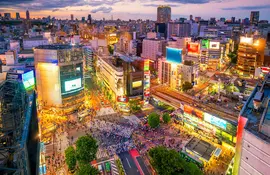
Worldwide famous Shibuya crossing, Tokyo
©Wasin Pummarin/123RF
What to do in Tokyo on your first day
We recommend that you start your visit to Tokyo slowly by visiting the following districts: - Harajuku , the avant-garde district ; - Meiji Jingû , the imperial sanctuary ; - Takeshita-Dôri , a must-see street in the capital ; - Omotesandô , Tokyo's Champs-Élysées ; - Shibuya and its impressive crossroads.
One of our many experienced English-speaking guides can also accompany you to visit the classic sights of Tokyo (optional, from 9am to 5pm).
Day 3 : The big loop
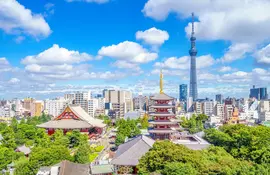
Senso-ji temple in Asakusa with Tokyo Sky Tree behind, a must-see on your first days to visit Tokyo
©Chan Richie/123RF
For this second day of sightseeing in Tokyo, we recommend the following "loop".
Start at Tokyo Central Station, with its original architecture, then head off to visit : - Ginza , Tokyo's chic district ; - Tsukiji , the small outdoor food market ; - Hama-rikyû , the Japanese garden between Tokyo's buildings ; - Asakusa , a traditional district and place of pilgrimage, accessible by cruise on the Sumida river ; - Sensô-ji , the oldest Buddhist temple in the Japanese capital ; - Tokyo Sky Tree , 643 metres high, with its panoramic view of Tokyo at sunset.
Between Hama-rikyû Garden and Asakusa, why not enjoy a cruise on the Sumida River ?
Day 4 : Follow the guide
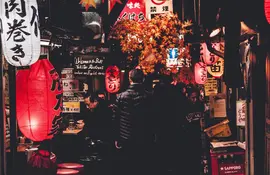
Yakitori restaurant alley in Shinjuku, Tokyo
©Alexandre Chambon/Unsplash
There are still many places to discover according to your taste ! Ueno, Yanaka, Odaiba...
Don't hesitate to book an English-speaking guide for the day (optional) to visit Tokyo off the beaten path!
Make the most of our many optional activities: - Are you looking more for fun? Ghibli Museum, Disneyland or Hello Kitty Park are waiting for you! - Do you prefer a themed activity? Book a visit on an architecture tour, gardens, home cooking or Noh's theatre. - Chasing thrills? Let yourself be tempted by a helicopter ride or a sumo tournament (in season)!
Day 5 : A breathtaking view of Fuji
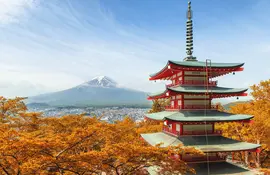
Mount Fuji from Kawaguchiko pagoda in Fall season
©Prasit Rodphan/123RF
In the morning, send your luggage to your hotel in Matsumoto (details in your travel diary, check with the hotel reception) so that you can travel light for your night in Kawaguchiko .
Go to Tokyo station and board a train for Kawaguchiko (3h journey, 1 change, details in your travel guide, included in your package). The train leaves the Japanese megalopolis and gradually winds its way through the valleys of the Mount Fuji region. You will arrive in Kawaguchiko in the late morning.
Upon arrival, stash your bags at your conveniently located hotel near the station. Then, it's finally time to delve into the wonders of the Five Lakes region! - Capture Mount Fuji framed by the iconic Chureito Pagoda and be prepared for a rewarding climb - the view is worth every step ; - Next, embark on a scenic lake hopping adventure. Each glistening lake reflects Mount Fuji's majestic peak , offering countless opportunities for stunning photos ; - Take the Kachi Kachi Ropeway for a breathtaking panorama of both the lake and Mount Fuji.
Consider renting a bike for a half-day adventure around scenic Lake Kawaguchiko, capturing stunning views of Mount Fuji along the way!
Day 6 : Nature and mountain lakes
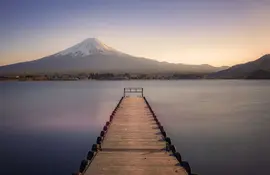
Mount Fuji at sunset
©manjik/123RF
Breakfast at the hotel.
In the morning, soak up the beauty of Kawaguchiko and its surroundings. Then, in the afternoon, embark on a scenic train journey (approximately 3h30 with two transfers) that will whisk you away to Matsumoto , nestled in the heart of the majestic Japanese Alps .
Once arrived, check into your hotel located in the city centre, between the station and the castle.
Day 7 : The Samurai Castle
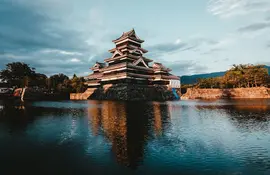
Steeped in history, Matsumoto has preserved many traces of its prosperity from the feudal period. Yet, the crown jewel of the city is its imposing castle, nicknamed the "Crow" for its dramatic black exterior. This magnificent structure, the oldest of its kind in Japan , offers breathtaking panoramic views year-round.
Beyond its historical charm, Matsumoto thrived as an industrial and commercial center. Even today, the Nakamichi district preserves a unique collection of workshops from the Meiji era , offering a glimpse into the city's bustling past.
Unveil the secrets of Matsumoto with a captivating half-day private tour and explore the city's rich history, including its iconic feudal castle and charming historical districts. This experience allows you to delve deeper into the past, perhaps even step into the shoes of a samurai for a morning with our expert guide Sylvain. Please not that during peak season, this tour may be substituted with a half-day guided tour in Tokyo.
Day 8 : The charm of the Japanese mountains
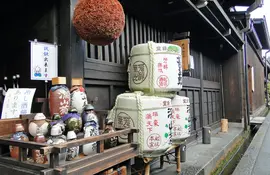
Taste Japanese sake in a brewerie
©SUSANA MARTIN/123RF
In the morning, send your luggage to your hotel in Kanazawa (details in your travel diary, check with the hotel reception) so that you can travel light for your night in Takayama .
Head to Takayama by bus, a memorable journey through the mountains (approx. 2h30, included in your package). Once arrived, check into your 3* Asunaro ryôkan or equivalent , located in the heart of the capital of the Japanese Alps .
Enjoy the charms of Takayama at your own pace, its century-old homes, temples and museums.
We recommend you to visit: - The traditional Kusakabe and Yoshijima houses ; - The Yatai Kaikan Exhibition Hall, where old religious festival " matsuri " floats are on display ; - The picturesque Shôwa-kan , museum on the 1940s to 1970s ; - The old Sannomachi shopping district ; - The Fuji Folk Art Museum .
Traditional Japanese dinner included in the ryôkan .
Day 9 : Rural & Mountain
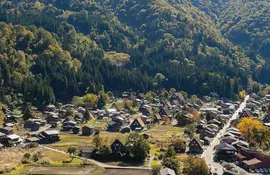
Shirakawago, typical village of the Japanese Alps classified as World Heritage
Traditional Japanese breakfast at the ryôkan .
Next stop: Shirakawago ! Board a convenient bus ride (approximately 50 minutes, included in your package) and immerse yourself in this charming village nestled in the Japanese Alps . Stroll through the village, a UNESCO World Heritage Site , and marvel at the traditional gassho-style farmhouses with their iconic thatched roofs.
Consider stepping inside a minka , a traditional Japanese house, to get a glimpse into the local way of life. For those seeking spiritual serenity, a visit to the Myôzen-ji temple , the village's Zen temple, is a must.
In the middle of the afternoon, head to Kanazawa by bus (1h15 journey, included in your package). Once arrived, check into your hotel located in the heart of this dynamic city.
Day 10 : The pearl of Japan
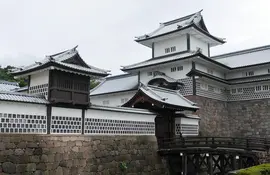
Enjoy nature and history in Kanazawa castle park, in the heart of the city
©kevboynet/123RF
Discover Kanazawa, between the northern sea and the Japanese Alps : - Kenroku-en , Kanazawa's magnificent Japanese garden ; - The Museum of Contemporary Art and its outdoor gallery ; - Omicho , the Sea of Japan fish market ; - Nomura House, home of the samurai , and its picturesque old quarter .
Overnight stay at your hotel in Kanazawa .
Day 11 : First steps in the capital of Kansai
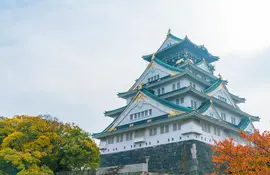
Osaka Castle, one of famous castles in Japan.
©︎Natthapon Ngamnithiporn
For your next leg, whisk yourself away to Osaka on a high-speed shinkansen (approx. 3h, included in your package). Once arrived, check-in at Hotel Intergate Osaka Umeda or similar category 3* hotel (rooms available from 3pm).
What is there to do in Osaka in 2 days ?
We recommend that you start your visit to Osaka slowly, in the northern and eastern districts :
- Osaka's medieval castle , with its park full of plum and cherry trees ; - The city centre and Nakanoshima Island , with its rose park surrounded by buildings ; - Utsubo Park , a cool oasis in the business district ; - Visit Umeda , the temple of Japanese shopping ; - Finish off with the Umeda Sky building at dusk for a 360° view of Kansai (including Kyoto on a clear day!).
One of our many experienced English-speaking guides can also accompany you to visit the classic sights of Osaka (optional, from 9am to 5pm).
Day 12 : Gastronomic introduction
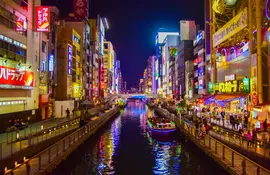
Osaka - Dotonbori - Canal
©Juliana Barquero - unsplash
For your second day in Osaka, we recommend the following itinerary :
- Osaka Kaiyûkan Aquarium , the world's largest aquarium in terms of volume ; - The Tennôji district and its Shitennô-ji Buddhist temple , one of the oldest in Japan ; - Spa World , Japan's largest thermal baths ( onsen ) ; - Shinseikai , with its retro charm ; - DenDen machi , the technologeek village ; - Finish off with Dôtonbori , the liveliest district in Japan.
Day 13 : The former capital
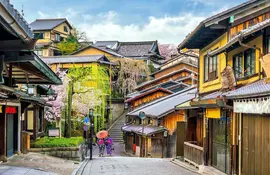
Old streets in Gion, traditional Kyoto district : a must-see when visiting Kyoto
Take the local train to Kyoto (about 1h using your prepaid transport card) and check into the RAKURO 京都 by THE SHARE HOTELS or equivalent (rooms available from 3pm).
You have 3 days to visit Kyoto. Start in the afternoon in the historic Gion district, close to your accommodation : - Kiyomizu-Dera , the impressive water temple ; - The historic lanes of Sannen-zaka & Ninnen-zaka ; - Kôdai-ji , Kyoto's temple of maple trees and bamboo. Finish your day with a stroll through the Gion district and enjoy the sunset. Meet your guide at 7 p.m. to start your evening walk around Gion , Kyoto's historic district. More details on the exact day and meeting point can be found in your travel guide.
At the end of this 1h30 walk, your guide will be able to recommend the best places to eat dinner! Please note that it is strictly forbidden to take pictures in the historic district of Gion..
Day 14 : Gold and Silver Treasures
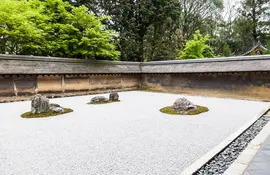
For your second day in Kyoto, we recommend the following itinerary: - The Zen garden of Ryôan-ji ; - Kinkaku-ji ( Golden Pavilion ) ; - Ginkaku-ji ( Silver Pavilion ) - The enchanting Philosopher's Path ; - Nanzen-ji temple.
One of our many experienced English-speaking guides can accompany you on a tour of these iconic sites (available as an option, from 9am to 5pm).
Day 15 : Now for some activity...
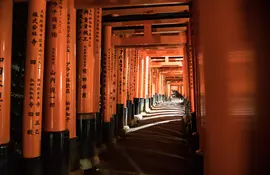
Visit Fushimi Inari, one of the most famous shrine in Kyoto
Continue your visit to Kyoto by heading west: - Nishiki , Kyoto's culinary market; - Nijô Castle , former residence of the shogun; - Arashiyama , with its bamboo grove and monkey mountain.
This is your last full day to visit Kyoto, so why not make the most of our many optional activities : - Want to enjoy nature? Discover our cycling activities along the Kamo-gawa river or hiking in the Takao gorges! - If you're more into the Japanese arts , you'll love our tea ceremony, meditation activities or private visits to secret gardens! - If you're in the mood for the Japanese countryside , let yourself be tempted by a trip to Ohara or try our popular activity: on the Tea Road!
Or, you could also take the 50 minute journey to Nara (not included in your package)! For your last evening, don't forget to see the sunset at the Fushimi Inari-taisha , Kyoto's immense shrine of 10,000 torii .
Day 16 : Sayonara, and see you next time!
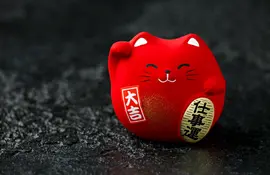
Sayonara - bye bye Japan !
©Maksims Grigorjevs/123RF
Take a direct transfer to Kansai International Airport (included but not accompanied).
This transfer is by shuttle or shared bus, with other customers departing from the same hotel or a hotel close to yours. These transfers arrive between 3 hours and 1.5 hours before the actual departure of your flight, and stops can be made before you arrive at the airport.
If you prefer a private transfer at a time of your choice, direct to the airport and with no intermediate stops, select the "Private Taxi to Airport" option.
Return flight to Europe, North America, Australia.
Don't hesitate to extend your trip by a few days, in the Kansai area or elsewhere... Get in touch and we would be happy to advise you!

Included in your self-guided tour
Accomodation
- 4 nights in a 3* hotel in the heart of Tokyo, close to public transport
- 1 night in a 3* hotel in Kawaguchiko
- 2 nights in a 3* hotel in Matsumoto, between the train station and the castle
- 1 night in a ryôkan in the historic centre of Takayama, traditional half-board
- 2 nights in a 3* hotel in Kanazawa
- 2 nights in a 3* hotel in the heart of Osaka, close to public transport
- 3 nights in a 3* hotel in the heart of Kyoto, close to public transport
The basic rate includes a twin room for two people.
- Airport transfer to Tokyo HND or NRT
- Return airport transfer Kyoto > Kansai International Airport KIX
- Prepaid public transport card
- Fuji Hakone Pass 3 days
- Train tickets for Kawaguchiko > Matsumoto
- Bus tickets for Matsumoto > Takayama
- Bus tickets for the journey from Takayama > Shirakawago > to Kanazawa
- Shinkansen Kanazawa > Osaka, seats reserved in standard class
Experiences and meals
- Airport meet and greet
- Traditional dinner and breakfast included at the ryôkan in Takayama
- Discounts at many of Kawaguchiko tourist sites
- The breakfasts in Kawaguchiko , Matsumoto and Kanazawa
- Half-day tour of Matsumoto with samurai experience
- Night guided tour of Gion, Kyoto
Additional services
- Unlimited internet access with Pocket WiFi
- Complete digital travel guide sent before your departure
- Luggage transfer between your hotels in Tokyo > Matsumoto and Matsumoto > Kanazawa
- Telephone assistance 24 hours a day, 7 days a week, in English and Japanese bilingual. The number will be given to you in your travel pack. This phone number is valid for telephone calls and also for Whatsapp.
Not included in the price of your trip
- Flights Europe <> Japan
- Optional insurance
- Personal expenses, including meals (breakfasts can sometimes be added as an option at your hotel reception, see details). For other meals, you will find addresses selected by us in your travel pack.
- Public transport once your transport cards have run out (see details)
- Everything not mentioned in the section "Included in your tour".
More about your trip
Your tour :
- The prices displayed on this page may vary according to the exchange rate of the Japanese ¥.
- Unfortunately, this tour is not accessible to people with reduced mobility.
- Children and babies accepted. From 3 to 11 years old a child rate is offered. In each accommodation, a standard adult bed will be offered to them, and a standard seat will be allocated to them in transport. From 0 to 2 years old inclusive, a "baby" rate is offered. This price corresponds to the allocation of a cot in the majority of the accommodation of the chosen circuit. However, we cannot guarantee a baby cot in each accommodation.
- Pets are not allowed.
- This programme is subject to change due to circumstances such as weather conditions or any other case of force majeure. Please note that due to the current circumstances, any information mentioned is subject to change or modification.
- Travel diary by email 3 weeks before departure, and other electronic documents
- Paper documents (airport transfer ticket, transportation card, Japan Rail Pass voucher) and Pocket WiFi upon arrival at the airport by our airport assistant.
- N.B.: no ticket for airport transfers from Kansai airport. The reservation is registered in the name of the tour reservation.
- N.B.: In very rare cases, mostly in very high season, steps might be reversed. You will be informed in your mini travel-guide. Thanks for your kind understanding.
Your accommodation :
- Double room: Rooms for two people in western hotels have 2 single beds (twin rooms) by default, which can usually be joined together. As an option, you can select a double room instead of a twin if you prefer a double bed.
- Single room: People travelling alone and wishing to book a single room must pay a supplement at the time of booking. The single room supplement is compulsory for orders with an odd number of participants. Please note that if you request more than two people in a single room, the single room supplement will be applied to all accommodation except for the ryokans (3 and 4*). In fact, as this is traditional accommodation, people with the same reservation are grouped together in spacious rooms for up to 5 people.
- 3-person room: If there are 3, 5 or more of you and you do not select the single supplement, a triple room will be allocated to you.
- In the case of a group order (> 5 people), it is possible, depending on hotel availability, that not all members of the group will be accommodated in the same hotel. Nevertheless, we aim to keep you close.
- Names of the hotels : The names given on the site are for information only. In the event of unavailability, an establishment of equivalent standing will be scheduled. Hotels, corresponding to local standards, are given as an indication and may be changed on site for hotels of a similar category.
- In the ryôkan , guests sleep on comfortable futons placed on the tatami mat. The room has a private sink and toilet. As is customary in Japanese ryôkan , the onsen bathroom is shared (not mixed) unless you take the "private bathroom in the room" option. OPTIONAL: Enjoy a private Japanese bathroom (traditional or modern onsen) in your room. This option is recommended for mixed couples, families, people who are modest or have visible tattoos. The 4* ryôkan (see 4* option) have comfortable futons raised on either western beds in a traditional tatami room. The bathrooms and toilets of the 4* ryôkan are private.
Your transport :
- Flights are not included in this tour . Do not hesitate to contact us if you would like to include flights in your order: Flights in economy class with stopovers or direct flights, eco-premium or business air upgrades, provincial departures or abroad: we will be able to advise you.
- The tour departure and end dates presented on this page relate to your stay in Japan. You will arrive in Japan via Tokyo (Narita or Haneda airports) and depart from Kansai airport (KIX, not Itami ITM). On departure, you will have to leave Europe the day before and land at 6:30 p.m. at the most to make the most of the airport services of your circuit (reception and transfer to Tokyo). The return flight is on the same day due to the time difference, with a departure time of 9am at the earliest. Please do not hesitate to consult us for any uncertainty or need for precision in the choice of international flights.
- If the flights have been purchased by your care without the intervention of Japan Experience, it is necessary to send us by mail 1 month before your departure your flight information (flight number, airport, date and time of arrival) to allow us 'Organize your welcome and airport transfer.
- Airport Transfers: The shared limousine bus leaves from the airport and stops either in front of your hotel or at a stop within 1-15 minutes walk from your hotel. Our airport assistant in Tokyo will drive you to the platform to pick up the airport transfer. The transfer to the hotel is unassisted. If you wish to be accompanied from the airport to your hotel reception, please choose the option "Accompanied Airport Transfer". This transfer is done in a shared shuttle or bus, with other clients leaving for the same hotel or a hotel close to yours. These transfers leave between 1.5 and 3 hours after your flight's scheduled arrival and stops can be made before your hotel. If you would like a private, non-stop transfer directly after the actual arrival of your flight, feel free to take the "Private Taxi from the Airport" option. Please note: due to the many changes in flight schedules by the airlines, if the airline notifies you of a change in arrival time less than 72 hours before your departure, and if it exceeds 45 minutes, we cannot guarantee your airport shuttle. You will then have to take a taxi at your own expense, requesting a refund from your airline for abusive schedule changes. The same applies to your return journey: 72 hours before your return flight, we cannot change the shuttle schedule. Similarly, you will have to take a taxi booked with the hotel, at your own expense, with reimbursement procedures with the airline company being the only solution. Japan Experience is not responsible for last minute schedule changes. On the way back, the shared shuttle bus leaves from your hotel or very close by to take you directly to the Kansai KIX airport in 1 hour 30.
- Included in your tour is a pre-charged transport prepayment card of ¥ 1,500 (around £10.30 / 14.54$) (suica or Pasmo brand); 1 Fuji Hakone Pass 3 days, train tickets for Kawaguchiko > Matsumoto, bus tickets for Matsumoto > Takayama, bus tickets for the journey from Takayama > Shirakawago > to Kanazawa, shinkansen tickets for Kanazawa > Osaka, (seats reserved in standard class). These cards should cover a large part of your trips during the stay. Upon expiry of the 1,500¥ transport prepaid card, any travel will be at your own expense by recharging your prepaid transport card (at vending machines in all stations and metro stations).
- The Matsumoto > Takayama and Takayama > Shirakawago > Kanazawa bus trips are included in your offer. Takayama > Shirakawago bus tickets are not reserved tickets. You must arrive at least 15 minutes before the bus leaves in order to reserve your seat. Tickets for other buses are reserved seats.
Your activities :
- Airport reception is in English. Your airport assistant will be waiting for you at the customs exit holding a sign with the name of the reservation. They will give you your travel documents and take you to your airport transfer. They will not accompany you to Tokyo (this is possible, but optional).
- The Matsumoto tour lasts around 4 hours and includes a samurai experience. Please note that the tour will be conducted in English if your group is made up of travellers of different nationalities. More details on the meeting point in your travel pack. Dinner is not included, but your guide will be able to recommend the best places to eat.
- The guided tour of Gion lasts around 2 hours and departs at 7pm. Please note that the tour will be conducted in English if your group is made up of travellers of different nationalities. More details on the meeting point in your travel pack. Dinner is not included, but your guide will be able to recommend the best places to eat.
Your meals :
- Breakfasts which are not included in your package can be added at the reception when you arrive at the hotel. However, you will find many cafés near your hotel serving copious breakfasts, often tastier than those in the hotels, which sometimes have tight schedules and are predominantly savoury. However, if you would like to add breakfast to your offer when you make your reservation, you can select it as an option.
- Traditional Japanese dinner and Japanese breakfast (mostly savoury) are included in your Hakone tour. Do not hesitate to indicate any dietary requirements you may have, we will pass them on to the ryôkan so that they can take them into account when planning the meals. If the ryôkan does not take any of these dietary requirements into account, we cannot be held responsible and no compensation will be issued.
Your additional services:
- A pocket wifi is included in your tour. It allows unlimited high-speed internet access. Your Pocket WiFi will be given to you at the airport of arrival.
- It comes with a small booklet to operate your device (don't panic: simple operation) and a prepaid envelope to return your device at the end of your stay. Your pocket wifi will work naturally until the last day of your trip to Japan.
- A maximum of 5 devices can be connected to a pocket wifi (phone, tablet, computer).
- A single pocket wifi is provided for a circuit order of 1 to 5 people. For an order of 6 people or more, a second pocket wifi will be added automatically and at no extra cost to your reservation.
When you buy, Japan Experience offers you 2 types of protection:
Japan Experience Flex : Cancellation insurance before departure under conditions.
Japan Experience Protect : Pre-departure cancellation insurance under conditions and on-site assistance under conditions.
Frequently asked questions
Do I need a visa? Do I need vaccinations?
As of October 11, 2022, Japan will open its borders to all Europeans (including the European Union, the United Kingdom and Switzerland) and North Americans (Canada and the United States) without requiring a visa.
Only non-triply vaccinated travelers need a negative PCR test performed within 72 hours prior to departure.
Do I still need a visa to travel to Japan as a tourist?
No, no visa is required for blue countries including all European countries (European Union, United Kingdom and Switzerland included) and North American countries (Canada and United States). List of blue countries: https://www.mofa.go.jp/j_info/visit/visa/short/novisa.html . If you have another nationality, please contact the Japanese embassy in your country of residence to obtain this visa.
Do I still need a PCR or antigen test to go to Japan?
No, if you are triple vaccinated with the vaccines approved by Japan (Pfizer, Moderna, ...exhaustive list here : https://www.mofa.go.jp/ca/fna/page24e_000317.html ) there is no need for any test.
I do not have 3 doses of vaccine or I am not vaccinated against COVID, can I enter Japan?
Proof of Covid vaccines is no longer required for travelers from "blue" countries. Therefore, unvaccinated travelers can enter Japan if they live in blue countries. But a negative PCR test is required at embarkation for travelers who are not vaccinated 3 times.
Is there still a quarantine upon arrival in Japan?
Quarantine and testing on arrival have been eliminated for travelers from blue countries.
Is insurance mandatory?
No, but it is recommended. Japan Experience, as an option of its tours, provides appropriate travel insurance solutions.
What anti-covid measures are still in place in Japan?
The mask must be worn indoors (except in exceptional cases) and in transportation.
What applications should I download before entering Japan?
For tracking the evolution of the coronavirus epidemic, the Japanese government recommends downloading several applications:
MySOS, the health and location tracking app (it will be used to confirm your location, health status and accommodation).
COCOA, the COVID-19 contact confirmation app (this will be used to notify you of possible contact with a COVID-19 positive person).
For more information, please visit: https://www.hco.mhlw.go.jp/manual/pdf-en/summary.pdf
What are the procedures for entry?
Due to the current crisis, we advise you to visit the website of the Japanese embassy in your country to find out about the procedures for entry. Normally, for citizens of the European Union, Switzerland and Canada, you just need a valid passport (for the duration of your stay). A visa is not necessary for a tourist stay of less than 90 days.
When is the best time to see the cherry blossoms? And the autumn leaves?
Recommended dates for seeing the spring flowers: - plum blossoms: mid-February to mid-March - cherry blossoms (sakura): between 20 March and 15 April (dates vary from year to year) - wisteria, iris, azaleas: mid-April to end of May - hydrangeas: June - lotus flowers: August Recommended dates outside of spring : - Autumn leaves: mid-November - Observation of Zen gardens under the snow: mid-December to mid-February
Where should you start your tour in Japan? Where should you finish?
Most Japan Experience tours begin in Tokyo. This is because it is the gateway to both modern and traditional Japan. Tokyo allows a traveller to enter Japan step by step, whilst getting used to the time difference. Tokyo also has Japan's top two airports in terms of traffic. A few of our tours end in the Kansai region (Kyoto or Osaka). The return flight then goes from from Kansai International Airport (KIX), the 3rd largest airport in Japan, offering many possibilities for return flights to Europe without any real extra cost compared to a return flight from Tokyo. On these tours, the Japan Rail Pass does not cover the whole tour, allowing you to reduce the total price of the tour. And this without losing any transport possibilities as the Japan Rail Pass is of little use in Kansai. However, tours are available from Tokyo and sometimes other cities in Japan.
What are the essentials for a first trip to Japan?
The must-see places for a first trip to Japan are:
- Tokyo, the megalopolis with a thousand sides to it
- Kyoto, the capital of sophistication and Nara, with its temples and deer
- Hiroshima, between memory and modern times, and its sacred island Miyajima
- Mount Fuji, Japan's most famous mountain
- The Japanese Alps: Takayama, Matsumoto, Shirakawa-go
- Kanazawa, both modern and traditional, on the Sea of Japan
And many other unforgettable places to discover in our tours.
How long should a trip to Japan last?
For a first trip to Japan, a period of 2 weeks is optimal, with at least 3 days in Tokyo and 3 days in Kyoto and its region. Don't forget to take some time at the beginning of the trip to get used to the time difference.
When to go to Japan?
There are 4 seasons in Japan.
Spring , from the end of February to the end of May, is a mild season suitable for all kinds of activities. It is of course the period when sakura (cherry trees) bloom, the perfect occasion to admire them (hanami). Their blooming period is between March 20 and April 10 for Tokyo and Kyoto areas, while it is possible to admire them earlier in the south of the country and later in the north. The cherry blossom period is very popular and generates a lot of crowds. However, there are other beautiful flowers that bloom during this season: plum blossoms, with their sparkling pink at the end of February; fabulous azaleas in April-May; hydrangeas of all colors or irises during June.
Summer , from June to August, is generally synonymous with heat with a rainy season in the last two weeks of June during which you can expect rain several days a week. During this very hot and humid season, it is possible to enjoy fireworks (hanabi) in July and August, as well as matsuri , traditional Japanese festivals. Among the most famous are the Gion matsuri, which is held in Kyoto in mid-July or the Obon Matsuri in mid-August.
Then comes the high wind season (taifu) , which reaches its peak between August and September, but it is not necessary to avoid going during this period. Indeed, there is little chance that they will involve changing your travel plans, few of them even reaching the main island.
Autumn , from September to November, is the season when temperatures are generally the most pleasant, quite similar to the continental European climate. It is also the season when the country is decorated with red tones and when one can admire the momiji (literally red leaves) which are usually visible in Tokyo, Kyoto and their region during the last two weeks of November.
Finally, winter, from December to February, is the coldest season but also the opportunity to admire the striking beauty of winter landscapes . December is a period of calm before the holiday season, while January is marked by a drop in temperature and the presence of a number of festivals. In central Japan, temperatures usually range from -4 to 10°C. In the mountains and the north of the country, temperatures drop significantly, while in Kyushu and Okinawa, winter tends to be milder.
The most touristic periods are : - in February, the 10 days around the Chinese New Year, which marks a strong influx of tourists from all over Asia; - between the end of March and the beginning of April, the cherry blossom period; - between the end of April and the beginning of May, during the "Golden Week", a period with many public holidays and during which many Japanese go on vacation; - mid-August, during the Obon Matsuri; - at the end of November, the best period to observe the momiji; - early January, for the New Year, when many businesses and activities are closed. So, if you want to go during a less crowded period, Japan Experience recommends you to go : - in February, outside the Chinese New Year period, for the cool but nevertheless pleasant weather and the splendid blooming of plum trees, before the cherry trees; - between mid-May and early June, to take advantage of the mild weather, lower traffic and the blooming of hydrangeas, azaleas and irises; - from September to early December, to take advantage of good temperatures, a reasonable level of tourism and the momiji period in late November.
Our commitments as Japan Experience, Europe No. 1 travel in Japan
- The guarantee of the first tour operator specialised exclusively in Japan for 40 years
- A wide range of products to let you Experience Japan from the inside
- Competitive prices thanks to a single team in UK, Europe, USA and Japan, with no intermediaries
- Assistance available in Japan throughout your trip
- A specialised team is available 7 days a week by phone or email
- The best advice thanks to the 3,500 articles available on our website
Optional services
Our other self-guided tours.
Discover other Self-Guided tours like « Path of the Samurai »
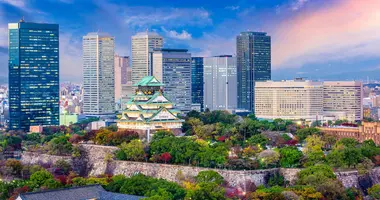
City break - Osaka tour Self-Guided Tours in Japan
- Duration : 8 days
- Locations : Osaka
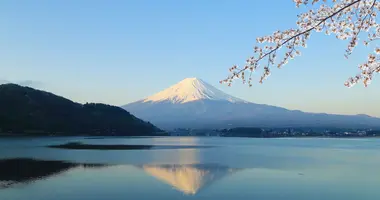
Tokyo, Mount Fuji & Kyoto Self-Guided Tours in Japan
- Duration : 10 days
- Locations : Tokyo, Hakone Mt Fuji, Kyoto
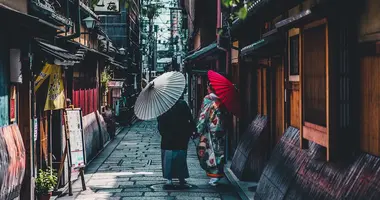
Romantic tour in Japan Self-Guided Tours in Japan
- Duration : 13 days
- Locations : Tokyo, Hakone Mt Fuji, Okayama, Miyajima, Kyoto
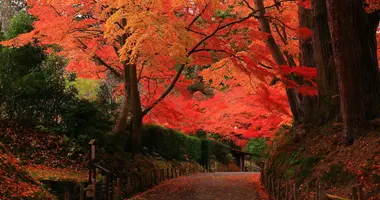
Tohoku: Traditional Japan Self-Guided Tours in Japan
- Duration : 18 days
- Locations : Kyoto, Tokyo, Nikko, Sendai, Tohoku, Aomori
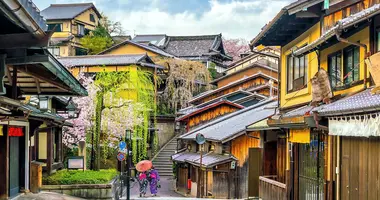
Slow Travel Japan Self-Guided Tours in Japan
- Duration : 21 days
- Locations : Tokyo, Hakone, Kyoto, Osaka, Hiroshima, Okayama

City break - Tokyo tour Self-Guided Tours in Japan
- Locations : Tokyo
Our activities in Tokyo, Fujikawaguchiko, Matsumoto, Takayama , Shirakawago, Kanazawa, Osaka, Kyoto
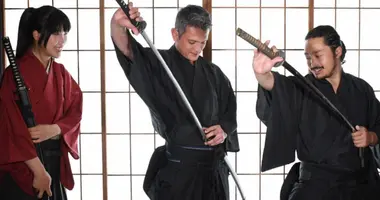
On the trail of the Samurai Matsumoto
- Duration : 3 hour
- Location : Matsumoto
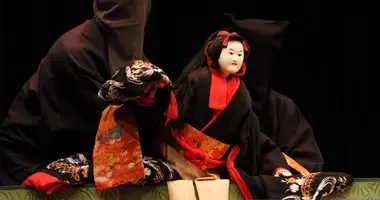
Bunraku, the traditional art of Japanese puppetry Activities in Osaka
- Duration : 2 hour
- Location : Osaka

Tokyo Game Show Activities in Tokyo
- Duration : 5 hour
- Location : Tokyo
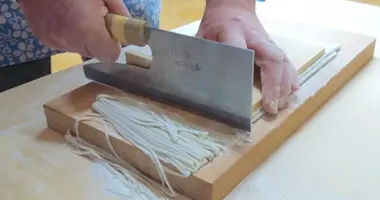
Soba making and Matsumoto Castle Visit Matsumoto
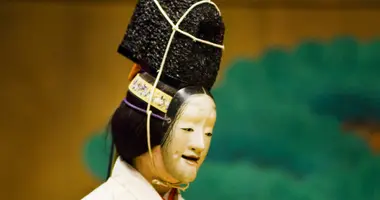
Noh, Ancient Japanese Theatre Activities in Tokyo
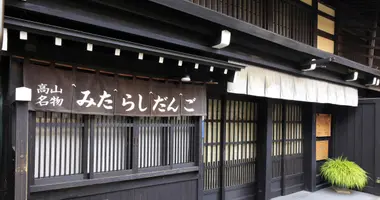
Takayama Discovery, half day Activities in Takayama
- Duration : 4 hour
- Location : Takayama
Please select your country on the list below:
- Switzerland
- United Kingdom
- Other countries
Samurai Travel.

サムライトラベルのホームページへようこそ
The easiest way to plan your personalized trip to japan.
Based in Tokyo, the capital of Japan, Samurai Travel experts are here to assist you in planning a custom, unforgettable trip with the best deals on flights, tours, guides, and more. Enjoy your stress-free travel with us!
サービス紹介
We offer a diverse range of products and services to both domestic and international travelers.
- Travel Insurance
- Travel Arrangement
- Experience Passes
Need something that is not listed here?
Please talk with our staff, and we’ll see what we can do to ensure you have the best trip possible.
サムライトラベル選ぶの理由
Why choose samurai travel.
Here are a few reasons why you should pick Samurai Travel above other travel agencies in Japan.

1. Experience
Our staff has years of experience in the travel industry, and we’ve helped thousands of happy clients since 2016.

2. Affordable
We offer competitive pricing that is not only affordable but also feels premium due to our excellent service.

3. Multi-Language
We provide friendly communication available in English, Japanese, Thai, Indonesian (bahasa), or Vietnamese.
実績
Achievements.
Despite our small beginnings, the ups and downs of business, and the COVID-19 pandemic, we have successfully served over 20,000 happy clients since 2016.
ビジネスパートナー

証言
What our clients say about us.
“Rất hài lòng khi sử dụng dịch vụ đặt vé máy bay từ Samurai Travel. Họ luôn cập nhật thông tin một cách đầy đủ và luôn tìm ra giải pháp tốt nhất nếu có thay đổi trong lịch trình của hãng hàng không. Việc đi du lịch trở nên thoải mái hơn”

“ตอบแชทลูกค้าเร็ว ให้ข้อมูลชัดเจน ประทับใจ ใช้บริการอยู่ค่ะ ขอบคุณนะคะ”

We are committed to give our best services
Samurai District
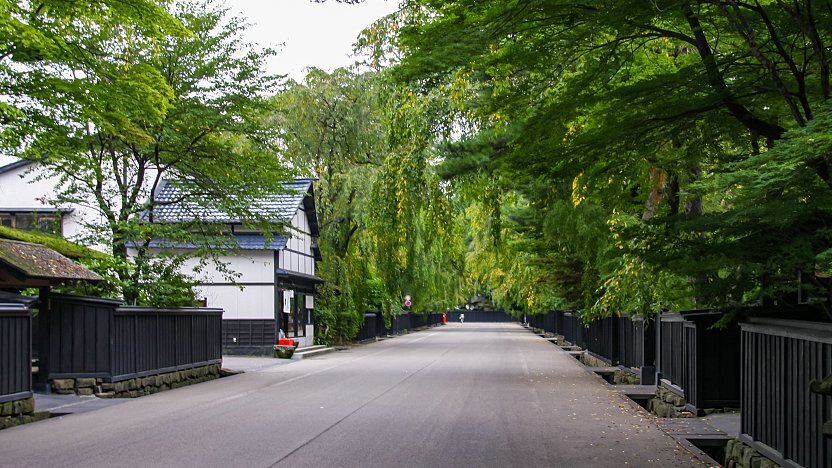
The Kakunodate samurai district, which once housed about 80 families, is one of the best examples of samurai architecture and housing in the country. Its wide streets and large courtyards are shaded by dozens of weeping cherry trees which bloom in early May. During this time, the wide streets are busy with hanami tourists.
Of the samurai houses that remain intact, six are open to the public and offer visitors the chance to see how middle class and wealthy samurai families might have lived. Of the six open houses, the Aoyagi and Ishiguro houses are particularly noteworthy for their size and quality.
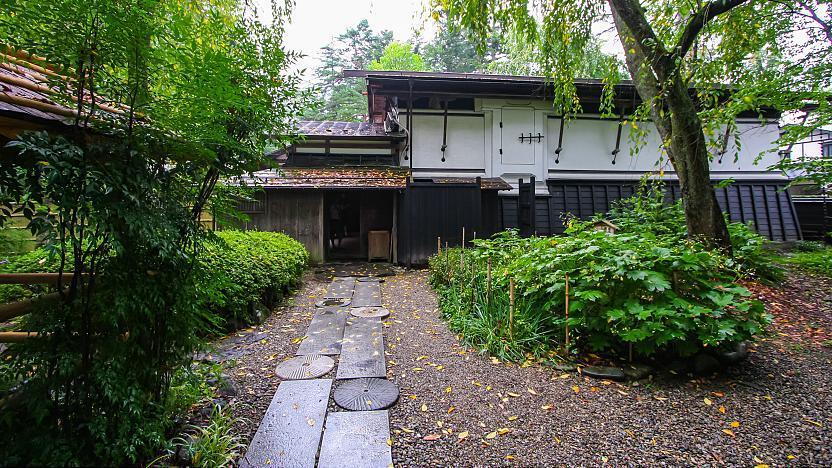
The Aoyagi House (Aoyagi-ke) is an impressive complex with multiple buildings containing museum collections, restaurants and gift shops. The displays provide interesting information in both English and Japanese on samurai traditions, lifestyle and the historical context in relation to Kakunodate . It is a useful place to visit for those interested in Kakunodate's samurai history.
The second samurai home of special note is the Ishiguro House (Ishiguro-ke). The area open to visitors is much smaller than that of the Aoyagi House, largely because the family still resides in the rest of the house. On display is a small collection of samurai armor and clothing, as well as anatomical drawings and studies. The Ishiguro House also has a well preserved storeroom.
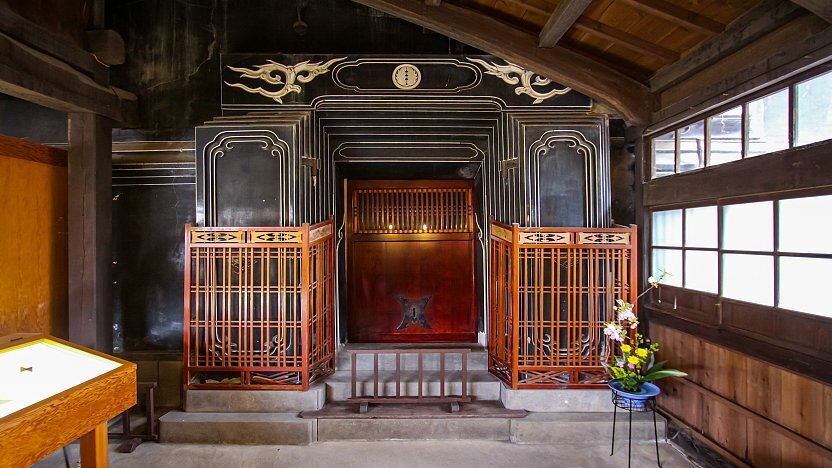
The other four open houses offer varying levels of accessibility. They are mostly examples of middle class samurai residences and thus, are smaller than the Aoyagi-ke and Ishiguro-ke. There are also two museums that may be of interest to visitors:
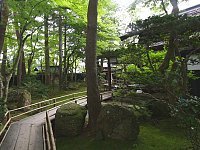
Kawarada Samurai House
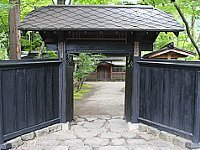
Odano Samurai House
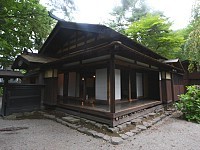
Iwahashi Samurai House
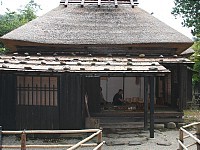
Matsumoto Samurai House
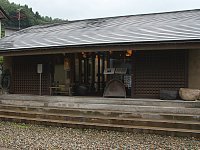
Omura Art Museum
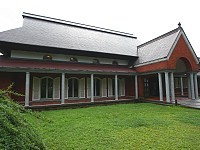
Denshokan Museum
Getting there and around.
Kakunodate 's former samurai district is a 20 minute walk or a short taxi ride from JR Kakunodate Station. The district begins at the Yoko-machi intersection.
How to get to and around Kakunodate
Hours and Fees
Aoyagi samurai museum, ishiguro samurai museum.
Questions? Ask in our forum .
Links and Resources
Aoyagi samurai manor museum, kakunodate samurai houses, ishiguro samurai house.


- Escorted Tours by Itinerary
- Escorted Tours by Date
Add-On Tours
- Escorted Tours FAQs
- Escorted Tours Terms and Conditions
- Self Guided Packages
- Self Guided FAQs
- Self Guided Tours Terms and Conditions
- Specialty Tours
- Private Tour Groups
- Pre and Post Cruise Tours
- How to Register and Booking Process
- Tour Discounts
- Staying In Ryokans
- Japanese Etiquette
- Food in Japan
- Preparing For Your Trip
- Baggage Transfers
- Smart Traveler Enrollment Program
- Weather in Japan
- Pocket WiFi Rental
- SUICA and ICOCA Cards
- Why Choose Samurai Tours?
- Meet Our Staff
- Frequently Asked Questions
- DIY vs Samurai Tours
- Ten Tour Commitments
- Gaijin on Getas Blog
- Travel Agents
Best of Japan in 22 Days
If you don’t want to miss anything in Japan, the Best of Japan in 22 Days tour is for you. From Sapporo to Nagasaki, you will enjoy the best Japan has to offer including some of Japan’s best onsens, gardens, castles, natural scenic areas, historical districts, temples and shrines, cultural activities and much, much more in a tour that will create travel memories to last a lifetime.
Proceed Booking
Already a member.
Forget Password?
Don't have an account? Create one.
Or continue as guest, adding item to wishlist requires an account, tour factors, cultural immersion, physical activity, got a question.
Don’t hesitate to contact us. We are an expert team and we are happy to talk to you.
1.866.316.7268
[email protected]
Tour Details
You’ll stay overnight at a mountaintop Buddhist temple where Buddhist monks will serve you meals of shojin ryori (the traditional Buddhist vegetarian cuisine) and attend prayer services at the temple early the next morning, climb to the top of a samurai castle, stroll through farmer’s markets, meet a “maiko” (geisha-in-training) face-to-face, see where the geisha live and work, stay overnight on beautiful and quiet Miyajima Island, soak in the thermally-heated mineral waters at some of Japan’s best onsens and admire sacred Mt. Fuji (weather permitting), the icon of Japan.
You’ll enjoy Tokyo where the sheer energy level will sweep you away, and Sapporo, host to the 1972 Winter Olympics with its many, fine restaurants, explore the morning market of Hakodate, where you can have the local specialties of crab, sea urchin or squid prepared for you for breakfast. You will enjoy Matsushima, considered to be one of three most scenic places in Japan, visit the sobering testament to peace of Hiroshima and the ostentatious over-the-top shrines and temples of Nikko. The rural, mountainous island of Shikoku will charm you with its natural beauty, and the island of Kyushu with the history-filled city of Nagasaki will surprise you with its diversity.
Tour Highlights
- Travel from northern-most tip of Japan to the southern-most tip of Japan
- Overnight at Buddhist temple and morning prayer service
- “Meet a Maiko” session (a Maiko is a Geisha in training)
- Overnight on Miyajima Island
- Overnight at several Onsen with naturally heated mineral waters
- Three “Kaiseki” style dinners
- 3 Shojin-ryori meals (Buddhist vegetarian)
- Nine separate rides on a Shinkansen (bullet train)
- Five overnights at a Japanese-style ryokan
Tour Inclusions
- Travel Guard Gold Policy (for American tour members only)
- 21 Day JR Rail Pass
- Meeting service at the arrival airport
- Sending service to the appropriate train station
- Baggage transfer from city to city
- Electronic version of Tour Handbook and Japanese History
- Domestic airfare from Nagasaki to Sapporo during the tour
Tour Exclusions
- International airfare is NOT included.
- A printed itinerary is not included
- Alcoholic beverages, soft drinks and desserts are NOT included
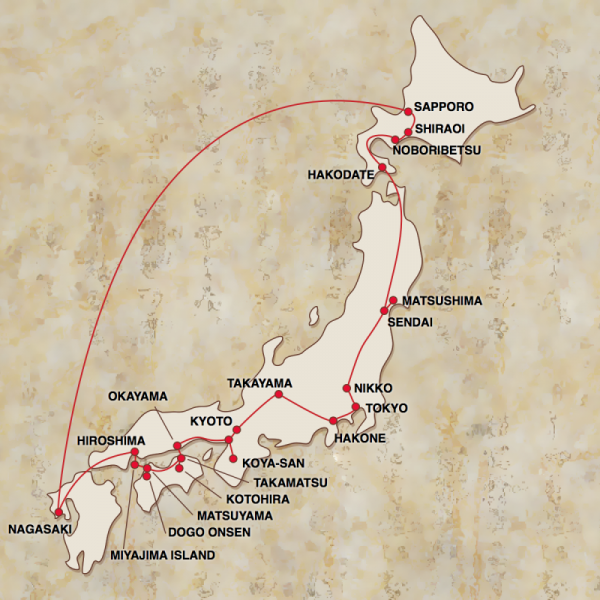
Tour Destinations
- Miyajima Island
- Noboribetsu Onsen
Day 1 Arrive in Tokyo
After clearing customs and immigration, you will be met at Tokyo’s Narita Airport by a Samurai Tours meeting staff member. They will then purchase a limousine bus ticket for you and help you board the bus to the hotel. After checking in, the evening is free. No meals are included.
Travel: 1-1/2 Hours; Walking: Light

Day 2 Tokyo – Tokyo Skytree, Ginza, Asakusa
After breakfast, you will start the day with a Welcome/Orientation meeting. Next, the licensed, English-speaking guide will escort you to the Tokyo Skytree for a birds-eye view of Tokyo. Next we will travel to the nearby Asakusa area. Here we will tour the Nakamise-dori, Senso-ji Buddhist Temple and the Asakusa Shrine where you will learn about Buddhist and Shinto Japanese religious practices. Afterwards, we will travel to the famous Ginza district. The Ginza is recognized by many as one of the most luxurious shopping districts in the world, attracting visitors and regulars alike from across the globe. We will return to the accommodations, where we will go through the train tickets for the rest of the tour. Breakfast at the accommodations and lunch at a local restaurant included. Optional Tour – Yakatabune Dinner Cruise
Optional Tour – Yakatabune Dinner Cruise
¥ 19,525 (You must pre-register before arriving in Japan.) Tour the Tokyo bay while relaxing with dinner and drinks! Sites include Rainbow Bridge, Odaiba and Tokyo Skyline from Tokyo Bay all lit up at night. Dinner includes sashimi and tempura or vegetarian kaiseki dinner with all-you-can-drink beer, sake, shochu, plum wine, whiskey, white wine, red wine, coffee, tea, and soft drinks. We will provide an escort to the port. but you will travel from the port on your own with our guidance, no guide included.
Day 3 Travel to Hakone; Tour Hakone; Overnight Hakone Yumoto Onsen
Before leaving for the morning, you will prepare your luggage to be transferred to Takayama and will be traveling to Hakone and Takayama with an overnight bag only. You should prepare your overnight bag with enough items for 2 days and 1 night. You will travel to Hakone Yumoto Onsen, where we will stay overnight. Here you can enjoy the thermally-heated mineral baths at the ryokan. In the afternoon, you will tour Hakone. we will tour Hakone. Hakone is famous for its natural beauty and the view of nearby Mt. Fuji (weather permitting). We will be taking many different forms of transportation (electric train, funicular, gondola and bus) around Hakone including the Hakone Sightseeing Boats on Lake Ashi. In good weather, a fine view of Mount Fuji, and enjoy Hakone’s rich scenery reflected on the lake’s calm surface. Breakfast and dinner at the hotel included.
(PLEASE NOTE: High winds and/or heavy rain can, and will often cause cessation of services on the Sightseeing Boat cruise. Should this occur, we will not be able to operate the itinerary as listed above, and will replace it with the best possible alternative given the weather conditions. Also, in the case of bad weather, even if the boats are still operating, we may alter the itinerary for your comfort and safety as Mt. Fuji will not be visible anyway.)
Travel: 1 1/2 Hours; Walking: Heavy
Day 4 Travel to Takayama
After checking out of the ryokan, we will travel to Takayama. Takayama, in the middle of the Japan Alps, with its traditional inns, shops, and sake breweries, has managed to retain its traditional charm. Breakfast at the ryokan included.
Travel: 5 Hours; Walking: Light
Day 5 Takayama – Miyagawa Morning Market, Jinyamae Morning Market, Takayama Jinya, San-machi-suji District, Free Afternoon
This morning we stroll through the farmer’s market, sampling the numerous options from vegetable stands and stalls selling herbs, pickles, and souvenirs. After that, we tour the Takayama-jinya, the governing office of Takayama and the surrounding area since the early 17th century. After lunch, the guide will escort you to the San-machi-suji district, consisting of merchant homes dating back to the 16th century. From here the rest of the day is free to roam and explore Takayama including the San-machi-suji. Visit the many temples, shrines and museums, rummage through antique shops, or relax at one of the sake breweries. The evening is free to enjoy one of the many nearby Hida Beef restaurants. (Hida Beef is the same thing as the more famous Kobe Beef.) Breakfast at the ryokan and lunch at a local restaurant is included.
Optional Tour – Takayama
¥ 11,715 (Or 10,000 Yen in Japan.) After finishing the scheduled tour of Takayama at the Takayama Jinya, the guide will take you on a tour of the San-machi-suji District. Lined with merchant homes, sake breweries and craftsmen’s workshops, it was the center of the old town and today it still retains its quaint atmosphere. After enjoying lunch, we will continue to Sakurayama Hachimangu Shrine and Yatai Kaikan. Sakurayama Hachiman is the oldest shrine in Takayama and is beautifully constructed in unpainted wood design. Sakurayama Hachiman also sponsors the popular Takayama Festival. On our next stop to Yatai Kaikan, you will get to take an up-close look at the traditional and spectacular hand-carved floats that are displayed during the Takayama Festival.
Travel: N/A; Walking: Medium
Day 6 Travel to Kyoto; Kyoto - Nijo Castle, Kinkakuji (Golden Pavilion)
Before leaving Takayama, you will prepare your luggage to be transferred to Kyoto, and will be traveling with an overnight bag only. You should prepare your overnight bag with enough items for 2 days and 1 night. In the morning, we will travel by express train and Shinkansen (bullet train) to Kyoto. For many, just the name of Kyoto conjures up the classic images of Japan: streets of traditional wooden houses, the click-clack of geta (wooden sandals) on the paving stones, geisha in a flourish of brightly colored silks, and a tea master deliberately warming water and making tea. Steeped in history and tradition, Kyoto has in many ways been the cradle of Japanese culture. A stroll through Kyoto today is a walk through 11 centuries of Japanese history. After lunch we will visit Nijo Castle. Built in 1603, it was the Kyoto home of Tokugawa Ieayasu, the first Tokugawa Shogun. The ostentatious style of construction was intended as a demonstration of Ieyasu’s prestige, and to signal the demise of the emperor’s power. The finest artists of the day filled the castle with delicate transom woodcarvings and paintings by the Kano School on sliding doors. One of the castle’s most intriguing features is the so-called “nightingale” floors. To protect the Shogun from real or imagined enemies, these floorboards creak when stepped on. Finally, we will visit Kinkaku-ji. Kinkaku-ji, also known as the Golden Pavilion, is one of Kyoto’s, as well as Japan’s, most recognizable attractions. The gleaming building covered in gold leaf seems to float on the aptly named Mirror Pond, especially on a sunny day. Breakfast at the ryokan and lunch at a local restaurant is included.
Travel: 3 1/2 Hours; Walking: Medium
Day 7 Fushimi - Fushimi Inari Shrine; Kyoto - Higashiyama District, Yasaka Shrine, Gion Geisha District, Meet a Maiko Session
After breakfast, we are off by train to the nearby city of Fushimi, one of the largest sake producing regions of Japan. Here we will visit the Fushimi Inari shrine. This Shinto Shrine, established in the 8th century, is famous for the long tunnels of vermilion torii gates straddling a network of trails leading to the top of the heavily forested Mt. Inari. We will then travel to the Higashiyama District. This area of narrow, cobblestone alleys with its temples, shrines, numerous shops and restaurants is truly enjoyable and relaxing. We will stop for lunch in the Higashiyama District. We will then visit the Yasaka Shrine, also known as the Gion Shrine. This shrine, built over 1350 years ago, is one of the most famous shrines in Kyoto. Next, we will walk to the famous Gion Geisha District. Here, you will see where the Geiko (in Kyoto they call themselves Geiko, not Geisha) and Maiko live and work. We will have the opportunity to meet a Maiko (a Maiko is a Geiko in training), and eat dinner at a local restaurant. Breakfast at the ryokan and lunch and dinner at a local Japanese restaurant are included.
Day 8 Travel to Koya-san; Koya-san - Okunoin Cemetery and Temple, Garan Temple Complex, Overnight at a Buddhist Temple
Before leaving Kyoto, you will prepare your luggage to be transferred to Takamatsu, and will be traveling with an overnight bag only. You should prepare your overnight bag with enough items for 2 days and 1 night. We will board an express train to Osaka, and then continue to Koya-san by train and funicular. Koya-san, the world headquarters of the Shingon School of Esoteric Buddhism, was established in the year 816 by Kobo Daishi, considered by many to be the most influential religious person in Japanese history. After dropping off the luggage at the temple, we will enjoy a vegetarian lunch. After lunch, we will wander through the huge cemetery leading up to the Okuno-in temple. Kobo Daishi is buried at this temple, and many Japanese still believe that he is not dead, but merely in a very advanced state of meditation, waiting to awaken at the appropriate time. After touring the Garan Temple complex and checking into our shukubo (Buddhist temple lodging), you are free to roam and visit one of the 110 temples in the area or just rest in the garden at the shukubo. Your dinner of shojin-ryori (traditional Buddhist vegetarian cuisine – no meat, fish, onions or garlic) will be served by the Buddhist Monks from the temple. Breakfast at the ryokan, Shojin-ryori (Buddhist vegetarian cuisine) lunch at a local restaurant and Shojin-ryori dinner at the temple is included.
Travel: 3 Hours; Walking: Heavy
Day 9 Koya-san – Morning Prayer Service, Travel to Himeji; Himeji - Himeji Castle; Travel to Takamatsu
Early in the morning, we will attend a Buddhist prayer service held at the temple. After a vegetarian breakfast, we will travel back to Osaka, and continue by Shinkansen to Himeji where we will tour Himeji Castle. Built about 400 years ago, it is only one of four castles in Japan that has been designated as a national treasure and has also been designated as a UNESCO World Heritage Site. After touring the castle, we will continue to Takamatsu by Shinkansen and express train. The sprawling city of Takamatsu is located on the northern shore of Shikoku, the smallest, islands of Japan. Despite a relaxed atmosphere, Takamatsu hums with an urban energy. Walking down the city’s wide, sunlit boulevards or numerous covered shopping arcades you will find funky shops, artsy cafes and exciting nightlife. Shojin-ryori breakfast at the temple, lunch and dinner at local restaurants are included.
Travel: 4 Hours; Walking: Medium
Day 10 Takamatsu - Ritsurin Garden; Travel to Kotohira; Kotohira - Konpira Shrine, Kanamaruza Kabuki Theater
Before leaving for the day you will prepare your luggage to be transferred to Matsuyama, and will be traveling with an overnight bag only. You should prepare your overnight bag with enough items for 2 days and 1 night. We will start the day at Ritsurin Garden, thought by many to be one of best gardens in Japan. This garden was designed by the local feudal lord family and took over 100 years to create. The more than 1,400 twisted and contorted pines set this garden apart from other gardens. We will also stop for tea and sweets in a tea house overlooking a beautiful koi-filled pond. Next we travel by street car to the nearby city of Kotohira, where we will visit Kompira Shrine. Kompira Shrine is the main shrine of multiple Kompira shrines found around Japan that are dedicated to sailors and seafaring. Located on the wooded slope of Mount Zozu in Kotohira, the approach to Kompirasan is an arduous series of 785 stone steps. Before returning to Takamatsu, we will tour the Kanamaruza Kabuki Theater. Built in 1835, the Kanamaruza Theater is Japan’s oldest surviving, complete kabuki theater. Breakfast at the hotel and lunch at a local restaurant included.
Travel: 1 Hour; Walking: Heavy
Day 11 Travel to Matsuyama; Matsuyama - Matsuyama Castle, Dogo Onsen
In the morning, we will travel by express train to the city of Matsuyama. We will start the afternoon at Matsuyama Castle. Matsuyama Castle is one of Japan’s most beautiful original castles. It is located on Mt. Katsu, a steep hill in the city center providing visitors to the castle with a bird’s eye view of Matsuyama and the Seto Inland Sea. The castle was constructed between 1602 and 1628. The current three storied castle tower was constructed in 1820 after the original five storied one was destroyed by lightning. In the evening, you will visit the famous Dogo Onsen. It is thought this was the first onsen in Japan, and the history of the onsen goes back 1,000 years. The current main onsen building was built in 1894, and includes a bath reserved exclusively for visiting Emperors. Breakfast at the hotel is included.
Travel: 3 Hours; Walking: Medium
Day 12 Matsuyama - Ishiteji Temple; Travel by ferries to Miyajima Island; Overnight on Miyajima Island
Before leaving the hotel in the morning, we will transfer the luggage to Nagasaki. You will need enough items for three days/two nights. In the morning, we will tour the nearby temple of Ishiteji. This temple is one of the 88 temples (#51) on the Shikoku Pilgrimage. Ishiteji is known for its Niomon Gate, a designated national treasure. The main hall and pagoda are also designated important cultural properties, and all of the structures exhibit the typical architecture style of the Kamakura Period (1192-1333). In the afternoon, we will travel by high-speed ferries to Miyajima Island. The Japanese proclaim Miyajima Island to be one of the top three scenic sights in Japan. The evening is free to enjoy the solitude and ambiance of the island after all of the day-trippers head back to the mainland. Breakfast at the hotel and Kaiseki-style dinner at the ryokan is included.
Day 13 Miyajima Island – Free Day
The entire day is free to enjoy and relax in the beauty and ambiance of Miyajima Island: ride the cable car to the top of the mountain on Miyajima Island, or visit the Itsukushima-jinja shrine which was built in its present form in 1168. Or just stroll around the island while enjoying grilled oysters and momiji manju (a popular Japanese confection), the island’s specialty. Breakfast and kaiseki dinner at the ryokan included.
Travel: TBD; Walking: TBD
Day 14 Travel to Hiroshima; Hiroshima – Peace Park and Museum; Travel to Nagasaki
We will travel by ferry and train to the city of Hiroshima. Here we will visit the Hiroshima Peace Park and Museum, both sobering monuments to the tragic event on August 6, 1945. Late in the afternoon, we will travel to Nagasaki on the island of Kyushu. Breakfast at the ryokan included.
Travel: 6 1/2 Hours; Walking: Heavy
Day 15 Nagasaki - Dejima, Glover Garden, Free Afternoon
We will start the day by visiting Dejima. Dejima was a man-made island in the port of Nagasaki constructed in 1636. A few years later, the Dutch trading factory was moved to Dejima. The Dutch workers, the only remaining Westerners allowed in the country, were restricted to Dejima during Japan’s two centuries of isolation. Today, Dejima is no longer an island, as the surrounding area has been reclaimed during the 20th century. However, a number of Dejima’s historical structures have been reconstructed, including various residences, warehouses, walls and gates. There are many displays in these buildings documenting the daily life of the Dutch residents. Next, we will tour Glover Garden. Glover Garden is an open air museum, exhibiting mansions of former western residents of Nagasaki. It is located on the hill where western merchants settled down after the end of Japan’s era of seclusion in the second half of the 19th century. You can also enjoy a panorama of the city from the garden. The rest of the day will be free. Breakfast at the ryokan and lunch at a local restaurant included.
Travel: 1 Hours; Walking: TBD
Day 16 Travel to Sapporo; Sapporo - Sapporo Beer Garden
Before leaving Nagasaki we will transfer our luggage to Hakodate. You will need enough items for three days/two nights. The entire day is a travel day. We will be traveling by air to Sapporo, Hokkaido’s largest city and host of the 1972 Winter Olympics. In the evening, we will enjoy dinner at the Sapporo Beer Garden, located in the original Sapporo Beer Brewery, where you can try the local specialty of grilled lamb, cooked yourself at the table. Breakfast at the hotel and dinner at a local restaurant included.
Travel: 8 Hours; Walking: Light
Day 17 Sapporo - Upopoy Ainu Museum and Village; Travel to Noboribetsu Onsen
After breakfast, we will travel to Shiraoi wehere we will visit the nearby Upopoy National Ainu Museum where we will learn more about and experience Ainu culture. In the afternoon we will travel to Noboribetsu Onsen, one of the most popular and famous hot spring resorts in Japan. Breakfast at the hotel and dinner at the ryokan included.
Day 18 Noboribetsu Onsen - Free morning; Travel to Hakodate
The morning is free to explore Noboribetsu Onsen, including the Jigoku-dani (Hell Valley) and the other geothermal activity in the area. In the afternoon, we will travel to the city of Hakodate. Hakodate was one of the first cities open to the west after the Meiji Restoration. Breakfast at the ryokan is included.
Travel: 3 Hours; Walking: Light
Day 19 Hakodate - Hakodate Morning Market; Travel to Sendai
Before leaving, we will transfer our luggage to Tokyo. (You will need enough items for three days/two nights.) Early in the morning, we will visit the Hakodate Morning Market, where the sellers can prepare the specialties of Hakodate (crab, sea urchin and squid) fresh from their stalls for breakfast. In the afternoon, we will travel to Sendai. Breakfast at the hotel is included.
Day 20 Travel to Matsushima; Matsushima - Matsushima Bay Cruise, Entsuin Temple, Zuiganji Temple; Travel to Sendai
Today we will tour Matsushima. Matsushima, near Sendai, is known as one of Japan’s three most scenic areas, and has been visited by numerous dignitaries over the years including the famous haiku poet Basho who wrote a very famous poem about Matsuhsima published in the late 17th century. First, we will take a sightseeing boat that will navigate between the 260 small islands sculpted by the waves and covered with pine trees. During the cruise, you will see how Matsushima got its name (Matsu means pine and shima means island). After the cruise, we will visit the Entsuin Temple and the temple’s beautiful gardens. This temple was built in 1646 to house the mausoleum of Date Mitsumune. Of the two gardens that are near the main hall, the first is a Japanese style moss and maple garden with a heart shaped pond, while the second is a Western-style rose garden that was influenced by painting from inside the mausoleum. After completing a tour of Entsuin Temple and gardens we will continue on with a visit to Zuiganji Temple. Originally founded by the Tendai Buddhism sect in 828, the current buildings were built by the Date feudal lord family in 1606. Here, along the entrance to the temple, we will find the numerous Buddha statues carved by hand into the rocky-cliff face by buddhist monks to show their dedication. Breakfast at the hotel and lunch at a local restaurant are included.
Travel: 1 1/2 Hours; Walking: Medium
Day 21 Travel to Nikko; Nikko - Rinno-ji, Toshogu Shrine, Taiyuan; Travel to Tokyo
We board a Shinkansen (bullet train) and local train to Nikko, where the Tosho-gu Shrine is located. This shrine, built by Tokugawa Iemitsu, is a dedication to his grandfather, Shogun Tokugawa Ieyasu. (James Clavell’s fictional Shogun in his novel Shogun was based on this person.) One of the most elaborate monuments in Japan, no expense was spared in this shrine’s construction. After touring Nikko, we will travel by local train and Shinkansen to Tokyo. In the evening, we will enjoy our Sayonara dinner. Breakfast at the hotel and lunch and dinner at a local restaurant is included.
Travel: 5 Hours; Walking: Heavy
Day 22 Return Home
You will travel to the airport by express train to catch your flight home. Breakfast at the hotel is included.
Travel: 1 1/2 Hours; Walking: Light
Walking level descriptions: Light – 0 to 2 miles on level ground Medium – 2 to 4 miles on level ground or 0 to 2 miles on hilly ground Heavy – 4 to 6 miles on level ground or 2 to 4 miles on hilly ground
Dates & Pricing
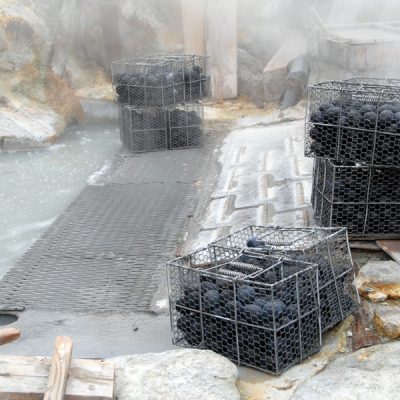
Our tours and tour itineraries are the best, but as the saying goes, “you can’t make everyone happy all of the time”. There may a specific destination or a specific experience you may want to include in your visit to Japan that may not be included your tour. Choose from our Add On tours to include your interests and make your Japan tour even better.
Click HERE to view all of the Add-On Tours.
Or, use the arrows to scroll though the recommended list of Add-On Tours for this tour.
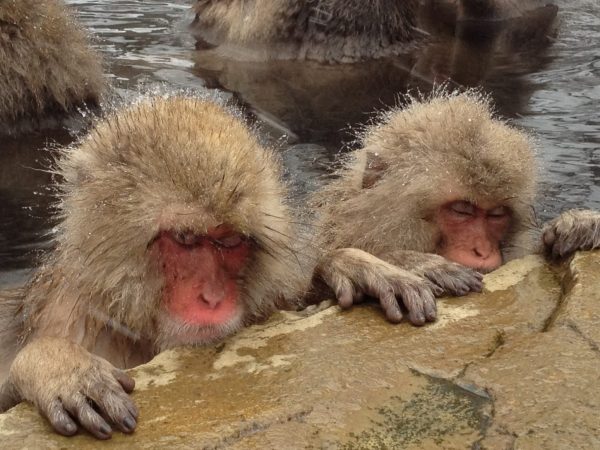
- Local, licensed, English-speaking, Japanese guides
- For residents of the following states please click here for your available plan. FL, KS, MN, MO, MT, NY, and WA
- For all other states and the District of Columbia click here
- Up to 69 – $0
- 70-74 – $200
- 75-79 – $400
- 80-84 – $700
- 85+ – $1125
- Travel Insurance Opt-Out: If you would prefer to opt out of the travel insurance, please note this at the time of registration. You will receive a $100 credit per person, which will be reflected on your invoice. In the event that you would need to cancel your tour, cancellation penalties may apply. See the Terms and Conditions page for the Cancellation Fees Schedule.
- The meeting service will meet you at the airport and provide you a transfer to the ryokan in Tokyo
- Meeting service can only be provided between 6am and 9pm. If you arrive at a time outside of these hours, we will need to provide alternative directions for you to get to the ryokan on your own.
- The sending service will escort you to the train station and make sure you board the correct train. The sending service will not accompany you to the airport.
For those requiring meeting or sending services on other than the scheduled arrival/departure dates, there will be a $100 fee for the meeting service from the airport into Tokyo or the sending service to the Tokyo train station.
- Lodging for 21 nights in Japanese-style ryokans or western-style hotels
- Japanese-style or Western-style breakfast every morning (Please Note: Some ryokans offer Japanese breakfasts only.)
- 10 Japanese-style or western-style lunches
- 9 Japanese-style or western-style dinners (including 2 gourmet kaiseki dinners, a Shojin-Ryori (traditional Buddhist vegetarian cuisine) dinner at the Buddhist temple and All-You-Can-Eat Grilled Lamb Dinner at the Sapporo Beer Garden)
- Reserved seat train tickets (where applicable)
- Use of audio tour guide system (must provide own headphones)
- An electronic version of the itinerary
- The appropriate amount of free time to allow you to explore and discover your own personal Japan.
- All transportation costs when traveling with the group. (Transportation costs during scheduled free times are the tour member’s responsibility.)
- Admission fees to the destinations and activities listed in the Tour Highlights column on the right. (Itinerary specifics subject to change.)
- Sayonara dinner at the end of the tour
- Baggage transfer from Tokyo to Takayama (one bag only)
- Baggage transfer from Takayama to Kyoto (one bag only)
- Baggage transfer from Kyoto to Takamatsu (one bag only)
- Baggage transfer from Takamatsu to Matsuyama (one bag only)
- Baggage transfer from Matsuyama to Nagasaki (one bag only)
- Baggage transfer from Nagasaki to Hakodate (one bag only)
- Baggage transfer from Hakodate to Tokyo (one bag only)
Each tour member receives an electronic copy of our tour handbook. This handbook is full of tips and suggestions taken from our Japan travel experiences that allow you to better plan and prepare for your trip, and therefore enjoy your trip even more. The tips and suggestions included cover everything from how to save while exchanging money, what to pack, some basic Japanese-language tips, general etiquette dos-and-don’ts, ryokan customs, etc.
- Airfare to and from Japan is NOT included
- A printed itinerary is NOT included
Jackie leech
Michelle Friedrich
I loved this tour. I am already considering going on another in a few years. I did a lot more than I ever imagined.
William Jacobs
Dale and Kay Rhoney
We have highly recommended you to friends and I think Teri and Paul Graham from Lake Oswego, OR (good friends of +35 years!) are taking our 22 day tour with you in ?April/May? We didn’t remember about the 5% discount for them but know they will enjoy the great overview of Japan with you…. like we did!!
Related Tours
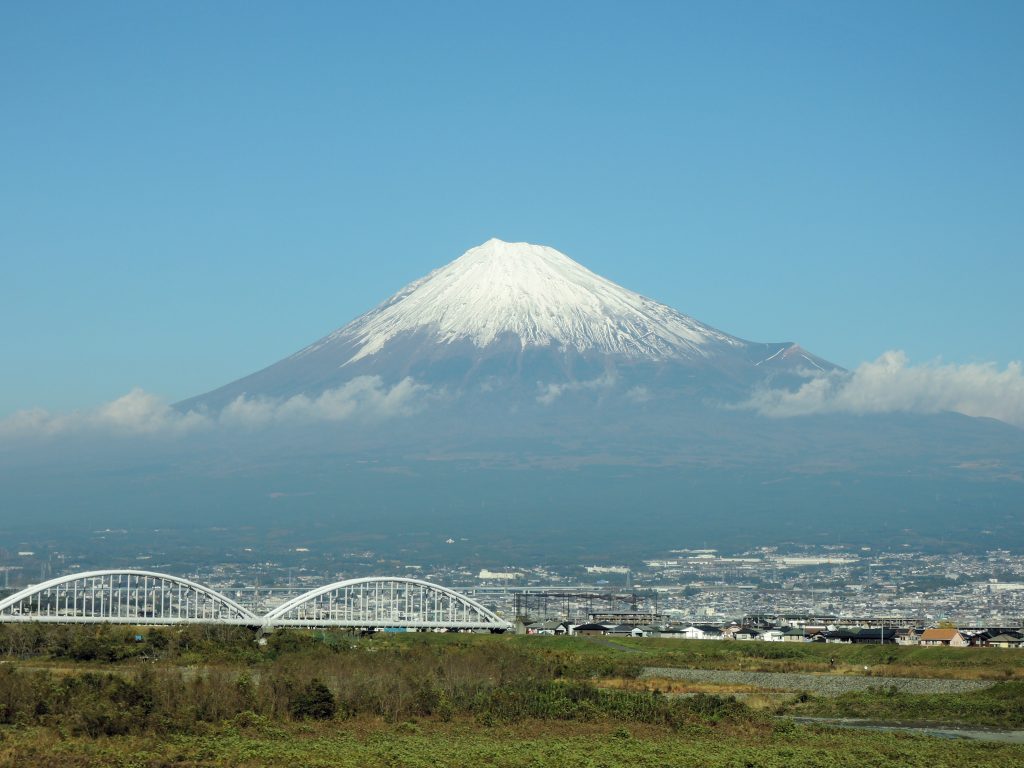
Golden Route
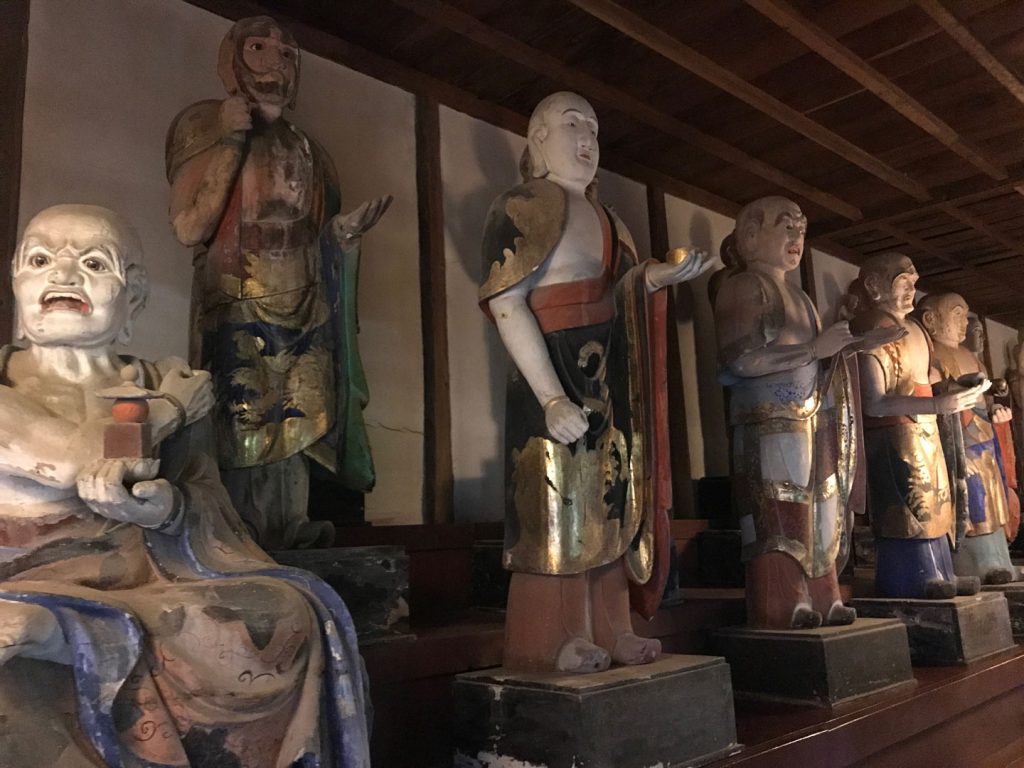
Shikoku 88 Temple Pilgrimage – Part 2
- Destinations
Asakusa Kaguwa: Geisha and Samurai Entertainment Show in Tokyo
Enjoy the dance show featuring an Oiran at Asakusa Kaguwa in Tokyo!
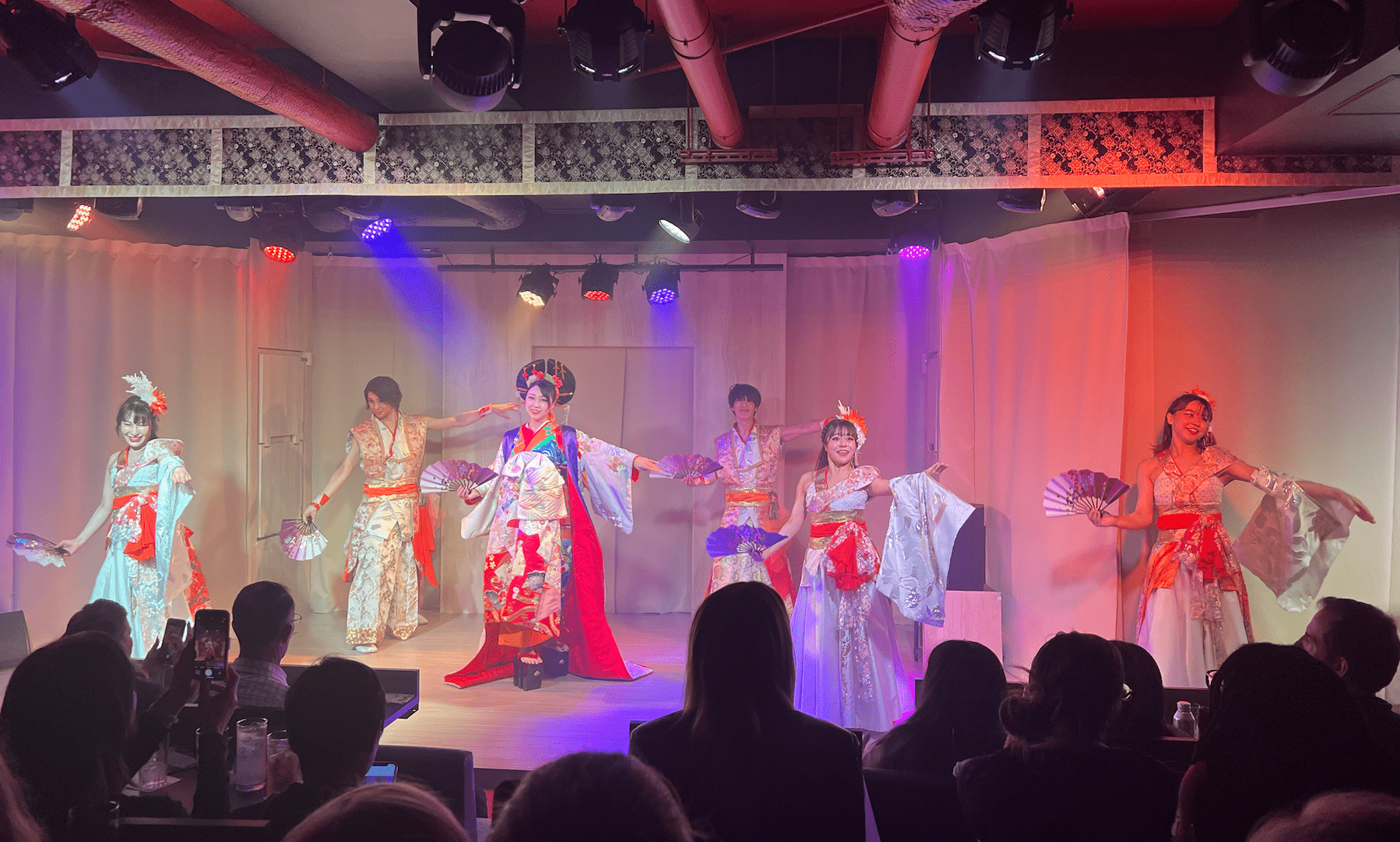
Asakusa , located in central Tokyo, is a lively neighborhood known for its rich history and cultural attractions. With the famous Senso-ji Temple as its centerpiece, Asakusa offers a glimpse into traditional Japan through its bustling streets filled with souvenir shops and street food vendors . The area also boasts a diverse culinary scene, with plenty of classic Japanese eateries serving up local favorites like tempura, sushi, and grilled eel.
Whether you’re exploring its historical sites or sampling its delicious food, Asakusa is a must-visit destination for visitors to Tokyo.When the sun sets and local shops begin to close, a new attraction opens its doors in Asakusa, drawing the attention of both tourists and locals. We are talking about Asakusa Kaguwa, the best geisha and samurai japanese entertainment show in Tokyo.
A few days ago I had the opportunity to see this entertainment show and in this article I will like to introduce it to you and share my experience and honest opinion regarding this new activity in Asakusa, Tokyo!
*Please note that this article contains affiliate links by Rakuten Travel Experiences.
Asakusa Kaguwa
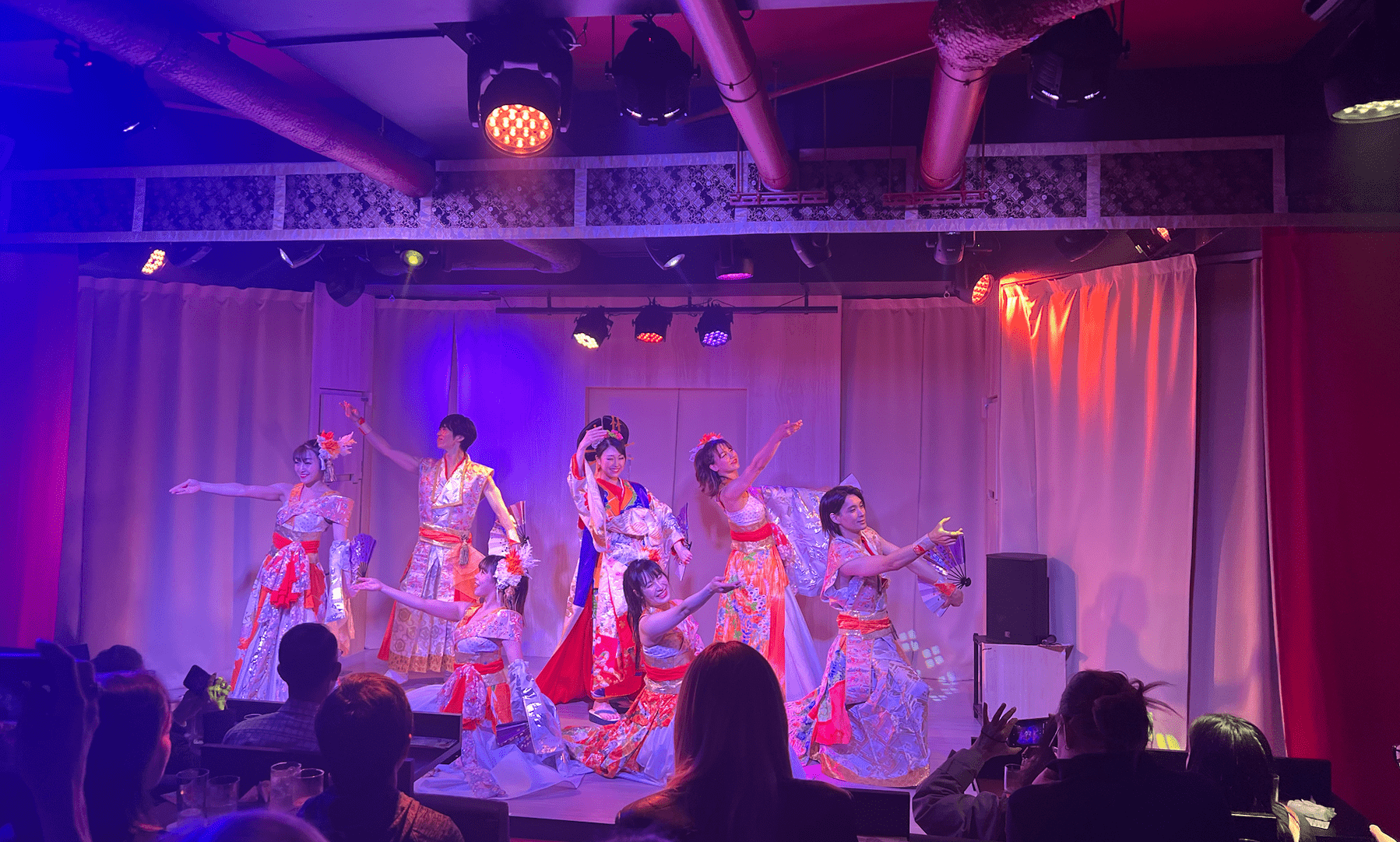
Asakusa Kaguwa is an unique Japanese-style entertainment show. We could say it’s primarily a dance show, with performers dressed as Oiran (Japanese courtesans), geishas, and samurais, but it’s more than that. Through elaborate choreography and staging, this show tells various stories. Being a non-verbal performance, you don’t need to understand Japanese to grasp the narrative.
The live show consists of several short acts, as well as a pre-show where performers interact with the public. Be prepare to be captivated by a performance that that you won’t soon forget! An energetic performance featuring lively dances, dynamic choreography, vibrant sets and costumes, and even thrilling Samurai sword fighting action. You can even take a photo with the actors, including a Japanese Oiran, after the show! All this can be enjoyed while having Japanese food, drinks, and snacks.
On weekdays (Wednesday, Thursday, Friday) they only perform one show from 19:00 to 20:00 (open at 18:00), and two performances on Saturdays and Sundays from 17:00-18:00 (opens at 16:00) and from 20:00-23:00 (open at 19:00). Please note that shows are not held on Mondays and Tuesdays.
It’s recommended go with time so you have time to order some food, check the venue, go to the bathroom before the show starts, etc. Also, to avoid disturbing other visitors by entering the building after the show has started.
<<Asakusa Kaguwa Show Reservation in Tokyo>>
My Experience at Asakusa Kaguwa
As I said, I had the chance to enjoy this show, so now I will like to share with you my first-hand experience going to the Asakusa Kaguwa!
1. Arriving at the location
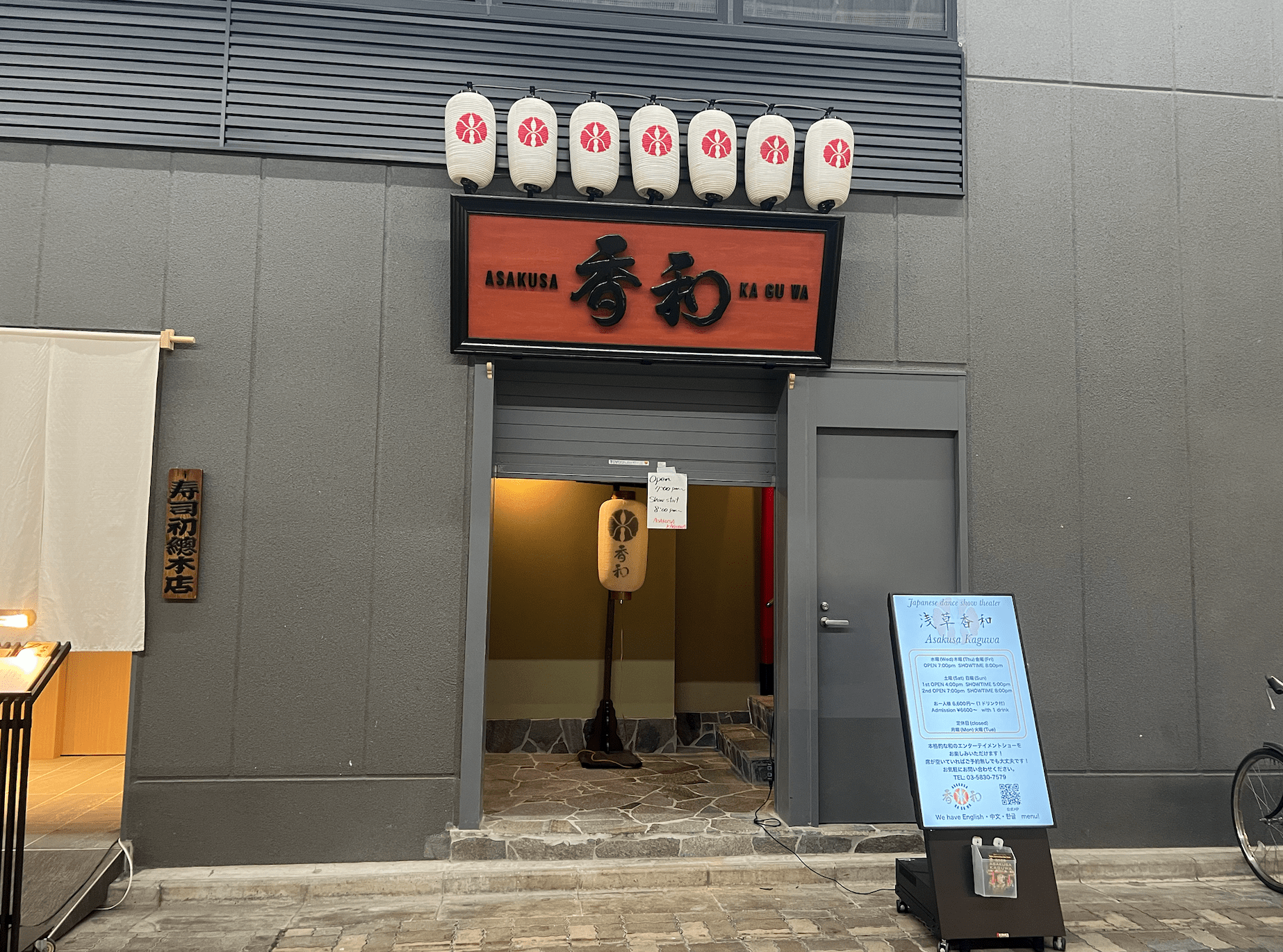
The venue where the new Asakusa Kaguwa is performed is located very close to Sensoji Temple, on a covered pedestrian street filled with local restaurants. The entrance is small, but you’ll see a red sign with the name written in kanji and Roman letters, along with Japanese paper lanterns.
The stage and the reception desk are located on the 2nd floor. Please note that there are no lifts or elevator, so for those that are in a wheelchair or require assistance, please don’t hesitate to ask assistance from the staff.
At the reception desk they will ask for your reservation, and after confirming it, you will be guided to your seat. You can also ask them to take care of your coat, or if you have some small luggage.
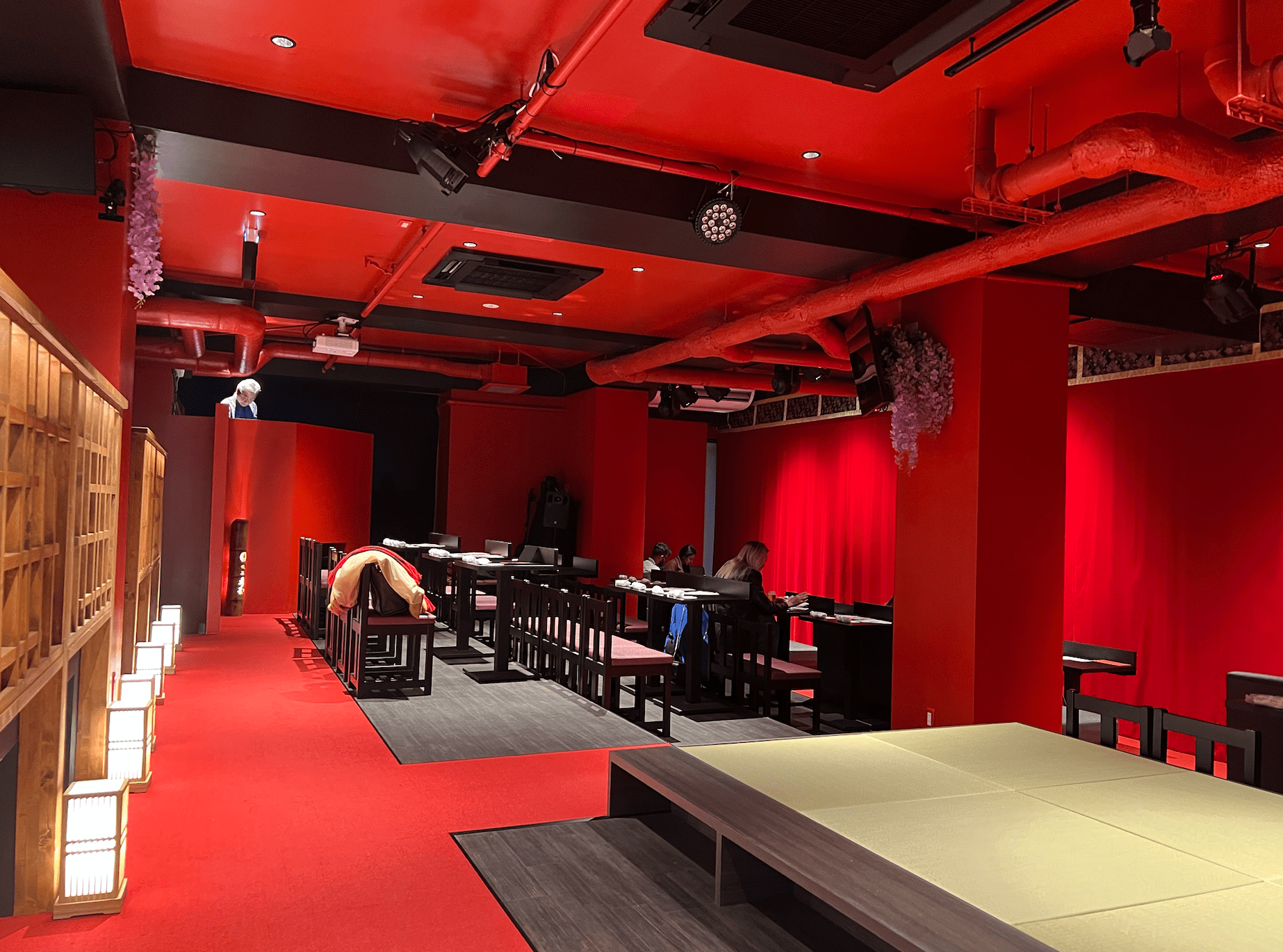
The venue features a simple yet elegant decor with a traditional Japanese touch. The predominant color is red, with light-colored flowers and wooden decorations. Please note that seating is for a minimum of two people, so if you come alone, you may be seated next to another person.
2. Food & Drinks
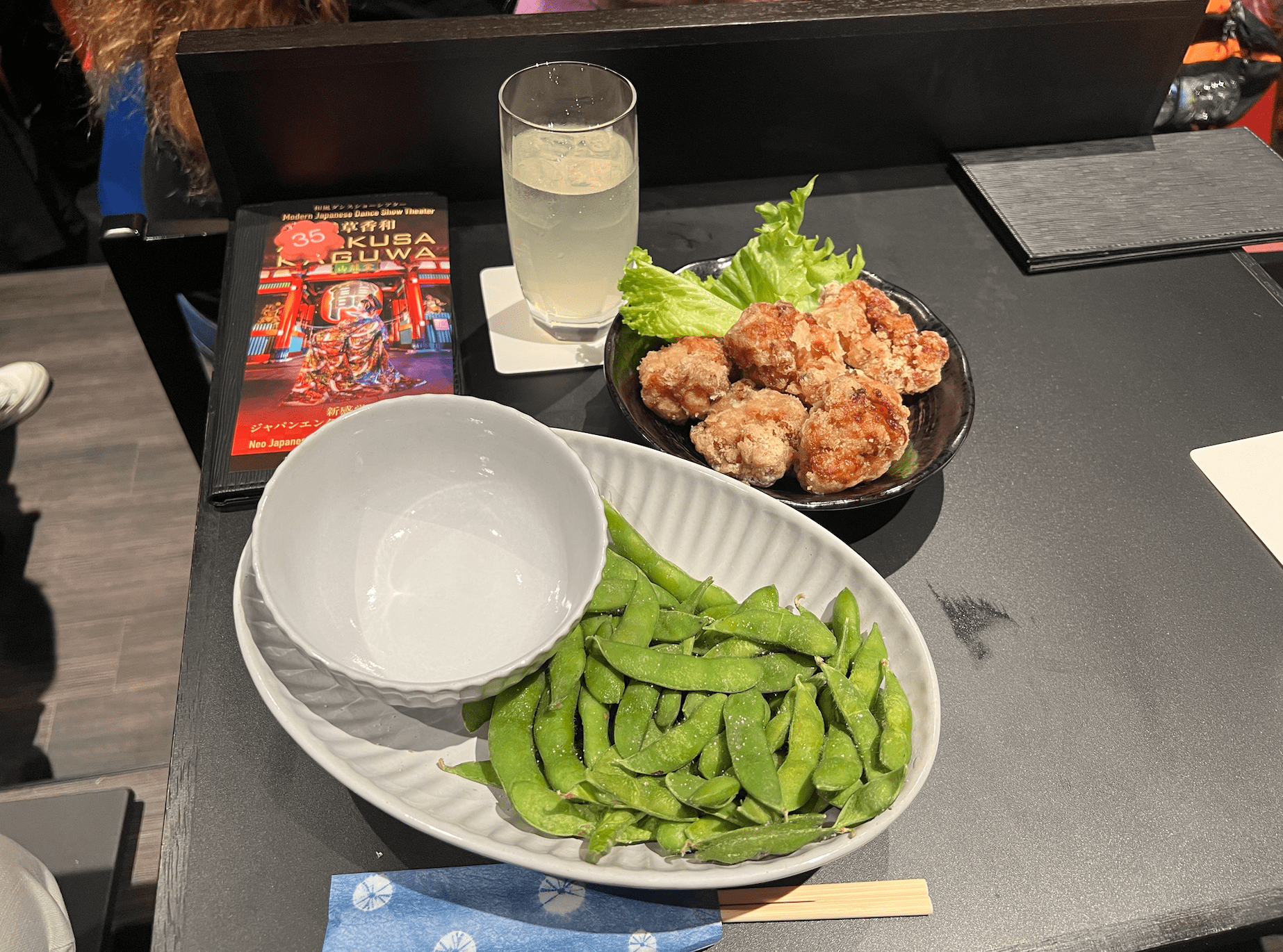
The admission includes a complimentary drink, which you can choose to be alcoholic or non-alcoholic.
Additionally, there’s a small food menu featuring some quick dishes and sweets. I ordered a plate of edamame and another of karaage (Japanese fried chicken). I must say the portions were much larger than I expected, and I couldn’t finish it all. But it’s perfect if you’re two people or more.
Please note that during the show, you can’t order drinks or food. If you want to order anything, you have to do so before the show starts. You can eat and drink (not making noise) during the show, but not place new orders. Also, although during the show the place gets pretty dark, the lights from the show gently illuminate the venue, so don’t worry as you won’t need to eat in complete darkness.
*Note: the legal drinking age in Japan is 20, so alcoholic beverages can only be purchased by guests 20 years and older.
3. The Show

The show has a duration of one hour, in which there are different stories. First it starts with energetic dances, in traditional Japanese clothes. There are several changes of clothes and choreographies.
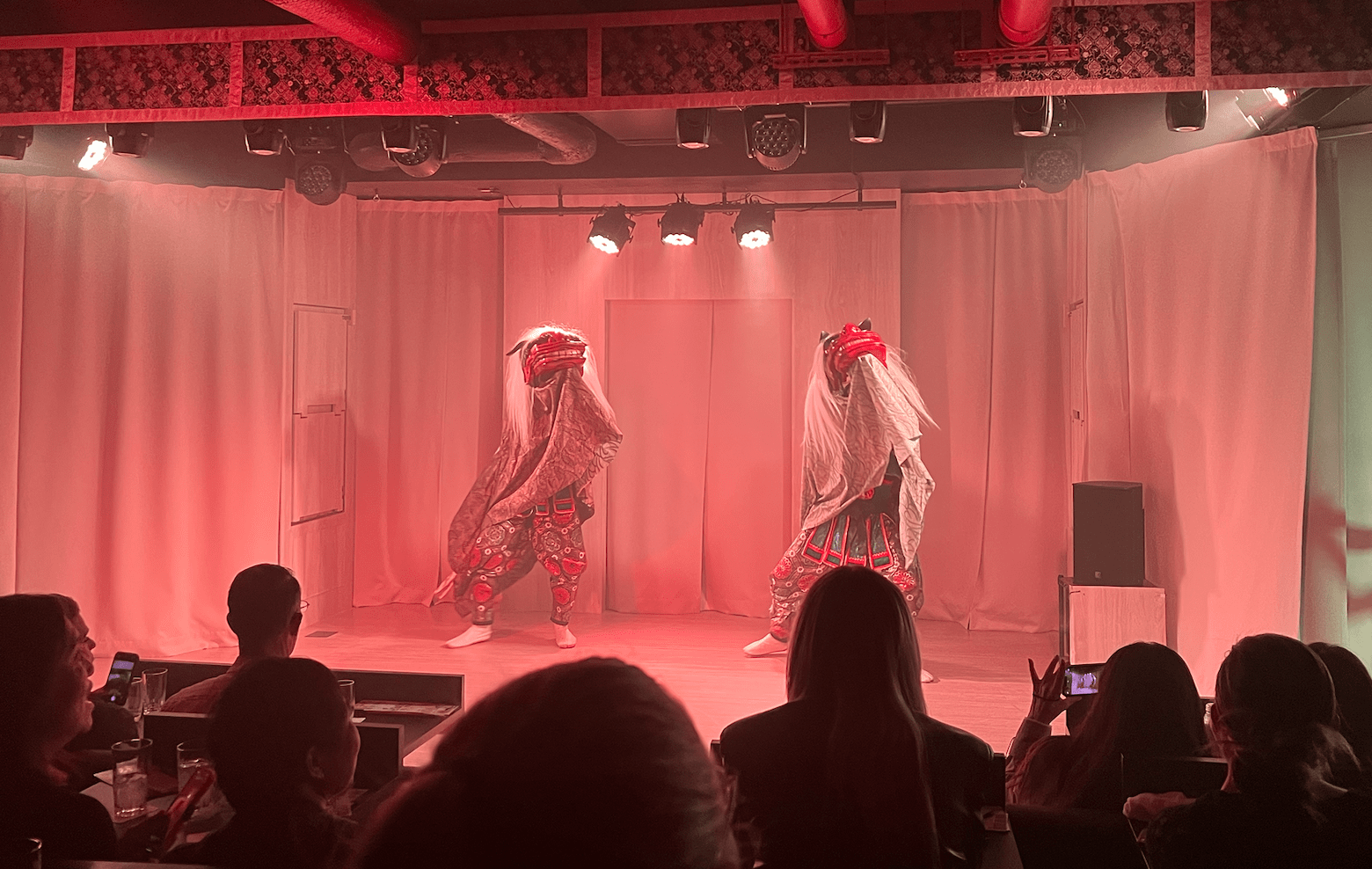
They also introduce some elements of Japanese culture, with explanations in English, and even some funny interaction with the audience. But that’s not all, we also find emotional stories that touch our hearts.
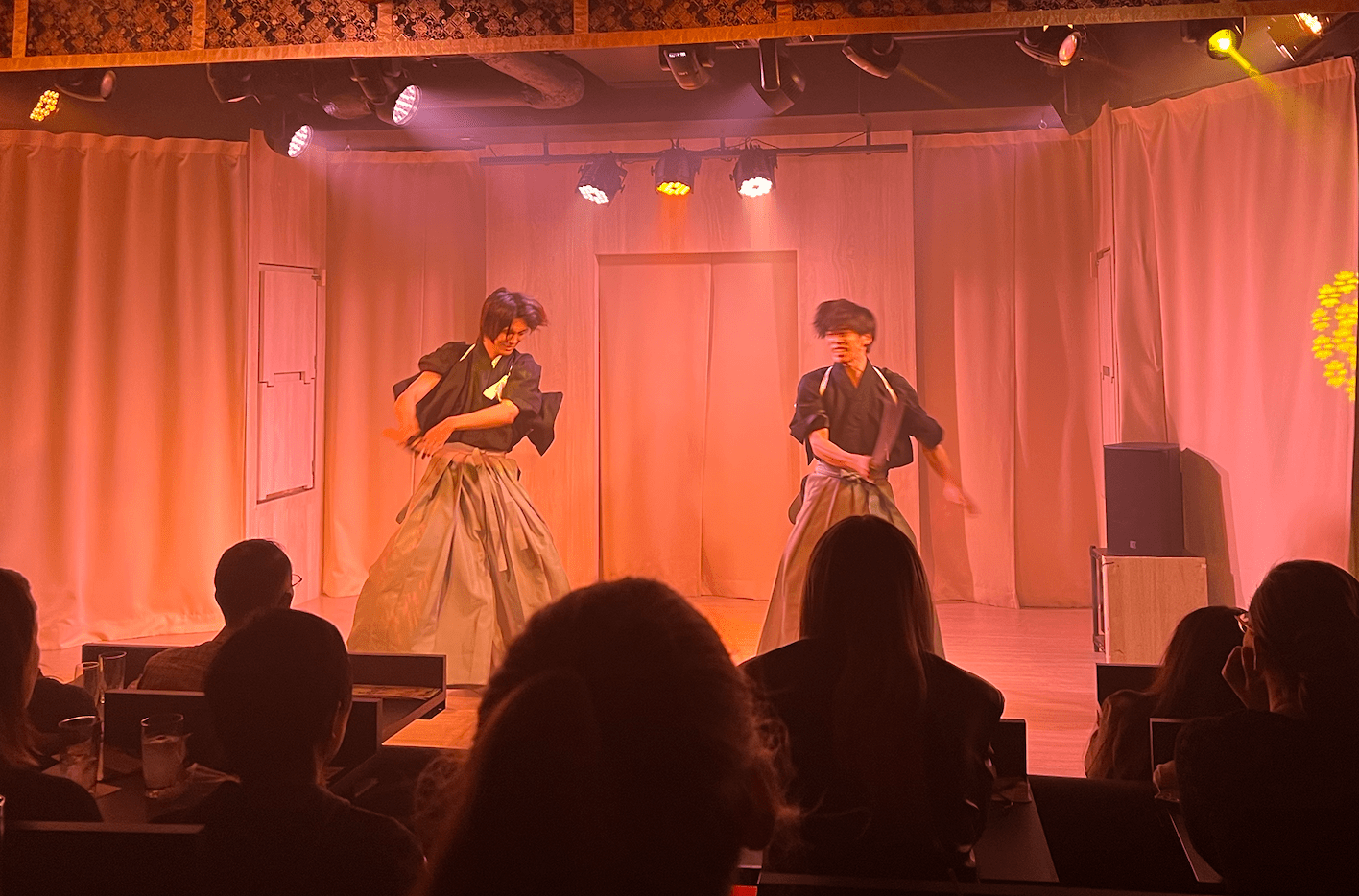
At the end, comes the central play. A story about two lovers who are separated as she is sold to a house in Kyoto’s red light district to pay her mother’s debts, but they promise to meet again. Will these lovers be able to reunite again?
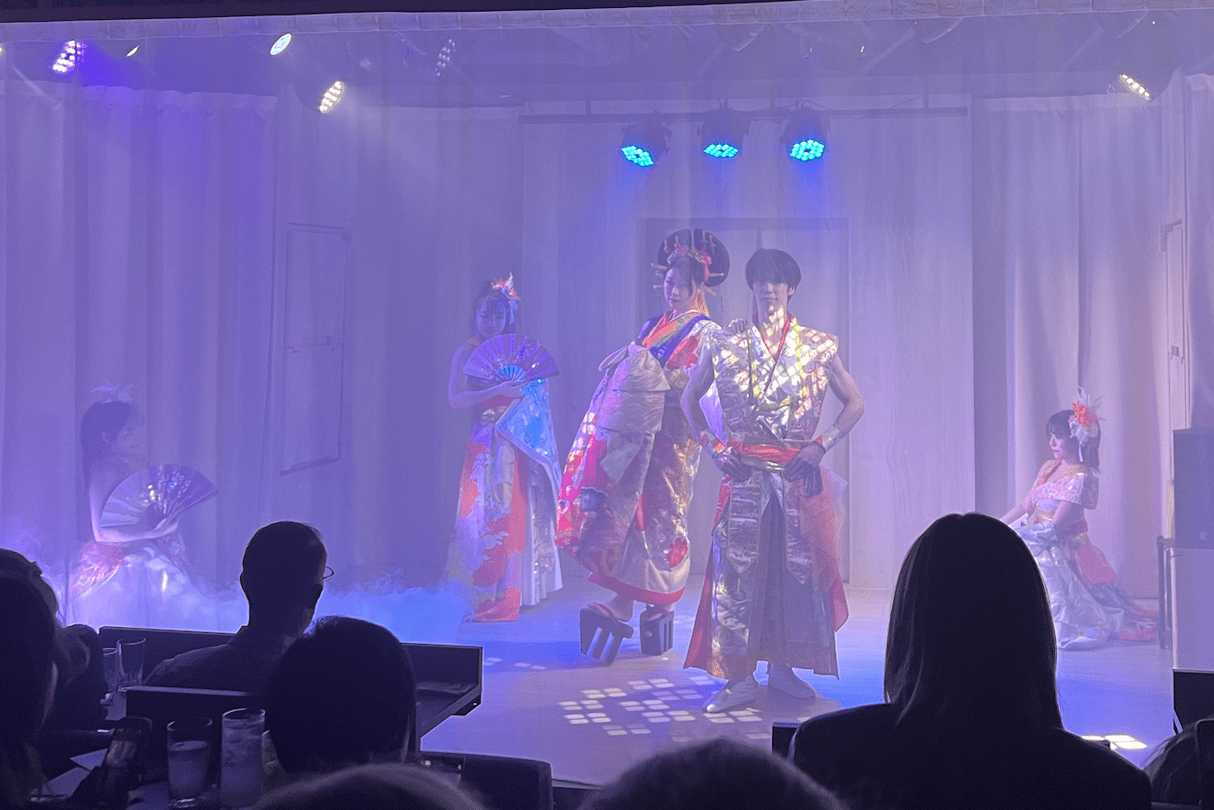
But they keep the best part for the last moment: a Japanese Oiran takes the stage!
I have been in different shows due to my work, but this experience it was something totally new that you won’t find elsewhere! I especially liked the fact that they can convey a story and even move you without saying a single word. Performers are really talented, and the choreography is very well crafted.
It used to be a very popular show held in Roppongi, but I think Asakusa is a much better location! Asakusa is undoubtedly the neighborhood in Tokyo where you can feel the most the traditional Japan, and it matches perfectly with the clothes of the show.
Asakusa Kaguwa Tickets
As I previously mentioned, the Asakusa Kaguwa is open from Wednesday to Sunday, with two shows on the weekends and one single show on weekdays. When I went it was full book, mostly with tourist so is a pretty popular show.
If you’re planning a trip to Tokyo, make sure to book online in advance and don’t miss the chance to enjoy yourself of this amazing show!
-Asakusa Kaguwa-
Information.
I hope this report has helped you! If you have a chance to visit Asakusa, check these articles too 😉
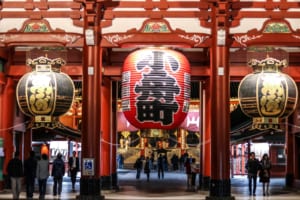
▽ Related Articles▽

▼ Editor’s Picks▼
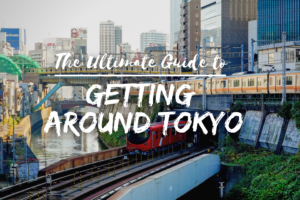
From Barcelona to Tokyo. Coffee & Adventure lover 🌏☕️
I started to like Japan because of the anime, music and doramas, but after my first trip to the country I found what I love the most: traveling around, the culture and history. I have travelled a lot in Japan, but I still have many places to discover that I want to share with you 🙋🏼♀️ Let’s discover Japan together!
Also, as a foreigner living in Japan for over 6 years I understand what kind of things are difficult when you move here and I want to help other people in the same situation that I have in the past.
- Things to Do

Unraveling Japan’s Urban Jewels: The Best Cities to Visit for an Unforgettable Adventure
L ost amidst the wonders of where to kick-start your Japanese odyssey ? Japan, with its stunning mix of old-world charm and innovative future, can be an overwhelming destination.
However, Kevin Erickson , your globetrotter guide for today, is here to set you on the right path!
- Tokyo is the magnetic pulse of Japan, drawing in 14 million visitors in 2019 alone.
- Kyoto mesmerizes with 17 UNESCO sites, proving its weight in cultural gold.
- Osaka seduces foodies and thrill-seekers alike.
- Insider tips to elevate your experience in each city.
- Chris Rowthorn encapsulates Japan as a "world apart, thriving in contrasts."
The Crowning Glories: Why Tokyo, Kyoto, and Osaka Reign Supreme
According to the Japan National Tourism Organization, Tokyo, Kyoto, and Osaka secure the top positions when it comes to tourist footfall. And why wouldn’t they? Let's dive deeper .
Tokyo: Where Traditions Tango with Tomorrow
Tokyo , the dynamic capital of Japan, is an electrifying fusion of ancient and avant-garde, creating an urban sprawl where the past and future coexist in harmonious rhythm. Every corner of this sprawling metropolis tells a unique tale, reflecting the city's uncanny ability to respect its roots while ambitiously reaching for the skies.
As dawn breaks, you'll find locals paying their respects at the centuries-old Meiji Shrine, where the spiritual essence of Shinto rituals blends seamlessly with the surrounding natural beauty. But as dusk engulfs the city, neon lights begin to dance across districts like Shinjuku and Akihabara, showcasing Tokyo's vibrant nightlife and its undying love for technological advancements .
Yet, Tokyo's heart truly beats in its neighborhoods. The historic district of Asakusa, with its iconic Senso-ji Temple, offers a glimpse into the city's rich past. A gentle rickshaw ride here transports you back to the Edo period, with shopkeepers selling traditional crafts and treats. Contrastingly, just a train ride away lies Harajuku, the epicenter of Japan's youth culture and fashion, where bold styles and eccentric trends reign supreme.
And of course, there's Odaiba, the futuristic artificial island featuring architectural marvels and the famous Unicorn Gundam statue standing tall, symbolizing Japan's love affair with innovation.
In Tokyo, centuries-old tea ceremonies find their home beside futuristic robot cafes. Sumo wrestlers train in the shadows of soaring skyscrapers , and meticulously maintained bonsai trees sit in the balconies of modern apartments. This city is an ever-evolving dance of traditions tangoing with tomorrow, proving that reverence for the past doesn't stifle innovation but instead fuels it. Indeed, Tokyo isn't just a city; it's a living testament to Japan's unparalleled journey through time.
Kyoto: A Time Capsule of Tenacity & Tradition
Chris Rowthorn might've been envisioning Kyoto when he said,
“Japan is a world apart.”
Kyoto , the ancient heart of Japan, stands as a mesmerizing testament to the nation's profound reverence for its storied past. Nestled amid misty mountains and meandering rivers, this former capital encapsulates the soulful essence of a time where emperors, samurais, and geishas etched their tales into the city's cobblestone streets and wooden machiya townhouses.
From the vermilion gates of the Fushimi Inari Shrine, which wind up the sacred mountain paths, to the iconic golden pavilion of Kinkaku-ji that glistens in the sun, every temple and shrine in Kyoto narrates epochs of devotion and artistry. The city's seventeen UNESCO World Heritage Sites aren't just monuments; they are living relics, where chants, rituals, and festivals continue to breathe life into traditions that span millennia.
But perhaps the true magic of Kyoto lies in its quieter moments: the subtle bow of a kimono-clad geisha in the historic Gion district, the whispering bamboo groves of Arashiyama, or the delicate craftsmanship of a local artisan creating intricate Kiyomizu pottery.
Kyoto is also a season-driven spectacle. The cherry blossoms of spring cast a rosy hue on the city's canals, while the russet leaves of autumn set the landscape ablaze, painting scenes reminiscent of classical Japanese ukiyo-e prints.
In Kyoto, the passage of time feels different. Here, amidst teahouses and terraced gardens, history isn't just remembered; it's relived, cherished, and celebrated. It's a city where every stone and sakura petal reverberates with tales of tenacity and tradition.
Osaka: A Gastronomic Galore & Glee
Osaka, often touted as Japan's kitchen, pulses with an undeniable vibrancy, striking a delightful balance between the contemporary and the traditional. While Tokyo may be the nation's crown and Kyoto its historical heart, Osaka is undeniably its soulful belly, always hungry for celebration and flavor.
Dotombori, the city's bustling epicenter, encapsulates Osaka's spirit. As the neon lights flash and the giant mechanical crabs beckon, the tantalizing aroma of street foods like takoyaki (octopus balls) and okonomiyaki (savory pancakes) fills the air, showcasing Osaka's culinary prowess. The city’s love affair with food is so profound that there's a popular saying: " Kyotoites are ruined by extravagance; Osakans are ruined by food."
Yet, beyond its gastronomic wonders, Osaka offers historical gems like the majestic Osaka Castle, a testament to the city's storied past. There's also the futuristic side, evident in attractions like the Universal Studios Japan, where thrills and adventures await.
Osaka's charm lies in its unabashed authenticity. It's a city that laughs a little louder, eats with a tad more gusto, and lives life with an infectious zest. Here, modern skyscrapers coexist with ancient shrines, and every alleyway promises an adventure, whether culinary, historical, or just plain fun.
The Hidden Haunts: Beyond the Big Names
While the aforementioned cities hold their ground firm, Japan's versatility doesn't end there.
Hiroshima sings a song of resilience.
Nara , where deer might photobomb your perfect shot.
Sapporo , a canvas painted in white during the Snow Festival.
Kanazawa , holding samurai secrets and geisha tales.
Yokohama and Nagasaki – the list is as endless as it is enchanting.
Conclusion: Japan - A Symphony of Surprises
Embarking on a journey through the diverse tapestry of Japan's cities is akin to stepping into a living, breathing storybook. Each city, from the globally renowned to the hidden gems, radiates its unique charisma, offering snapshots of a nation that seamlessly weaves millennia of history with future-forward innovations.
In Tokyo , one can marvel at the electric symphony of neon lights, yet find solace in the tranquility of its serene gardens, a reflection of the city's balancing act between the rapid pace of technology and the gentle embrace of tradition. Meanwhile, Kyoto stands as a testament to Japan's dedication to preserving its heritage, with temples, shrines, and wooden machiya revealing tales of emperors, samurais, and geishas from eras gone by.
Beyond these giants, cities like Hiroshima teach lessons of resilience and hope, while places like Sapporo present a winter wonderland, echoing the country's diverse climate and geography.
To travel through Japan is to experience a myriad of emotions. It is the thrill of Osaka's culinary adventures, the meditative peace in Kyoto's bamboo forests, and the awe of Tokyo's skyscraper canyons.
Kevin Erickson often muses, “In Japan, every alley, every shrine, and every smile seems to carry a tale waiting to be discovered.” It's a sentiment every traveler will echo after their own journey through this unparalleled land.
So, as you contemplate where to begin or continue your Japanese sojourn, remember, in every city, magic awaits.
1. What's the best time to visit Japan?
Spring (March to May) for cherry blossoms and fall (September to November) for vibrant autumn colors.
2. Is Japan expensive for tourists?
Japan can be pricier than some destinations, but with planning and tips like using JR passes, it's manageable.
3. Can I get by with English in these cities?
Major cities are tourist-friendly, with many signs in English. However, a translation app can be handy.
4. How safe is Japan for solo travelers?
Japan consistently ranks as one of the safest countries. However, always exercise general travel precautions.
5. What's a must-try Japanese dish in these cities?
While each city has its specialty, sushi, ramen, and tempura are universally beloved.
6. How's the public transport in these cities?
Efficient and punctual. Trains and buses are the lifelines of transportation in Japan.
- Japan National Tourism Organization. (2020). Tourist statistics.
- Rowthorn, Chris. (2019). "Lonely Planet Guide to Japan."
- Erickson, Kevin. (2022). "Whispers from Japan: A Traveler's Tales.

- Media & Industry
- Meetings & Events
- Select Language 简体中文 繁體中文(香港) 繁體中文(臺灣) India (English) Bahasa Indonesia 한국어 ภาษาไทย Tiếng Việt Singapore (English) Philippines (English) Malaysia (English) Australia/New Zealand (English) Français Deutsch Italiano Español United Kingdom (English) Nordic countries(English) Canada (English) Canada (Français) United States (English) Mexico (español) Português العربية Japan(日本語) Global (English)
- India (English)
- Bahasa Indonesia
- Singapore (English)
- Philippines (English)
- Malaysia (English)
- Australia/New Zealand (English)
- United Kingdom (English)
- Nordic countries(English)
- Canada (English)
- Canada (Français)
- United States (English)
- Mexico (español)
- Global (English)
- Fujiyoshida
- Shimonoseki
- Ishigaki Island
- Miyako Island
- Kerama Island
- Tokyo Island
- Koka & Shigaraki
- Hida Takayama
- Ginza, Nihonbashi
- Beppu & Yufuin (Onsen)
- Ginzan Onsen
- Nagasaki Islands

- Kumano Kodo
- Shikoku Karst
- Amami Oshima
- Hachimantai
- Omihachiman
- Aizuwakamatsu

- Diving in Japan
- Skiing in Japan
- Seasonal Flowers in Japan
- Sustainable Outdoors
- Off the Beaten Track in Japan
- Scenic Spots
- World Heritage
- Home Stays & Farm Stays

- Japanese Gardens
- Japanese Crafts
- Temple Stays
- Heritage Stays
- Festivals and Events
- Theater in Japan
- Japanese Tea Ceremony
- Cultural Experiences in Japan
- Culture in Japan

- Local Cuisine Eastern Japan
- Local Cuisine Western Japan
- Local Street Food
- Japan's Local Ekiben
- Japanese Whisky
- Vegetarian and Vegan Guide
- Sushi in Japan Guide
- Japanese Sake Breweries

- Art Museums
- Architecture
- Performing Arts
- Art Festivals
- Japanese Anime and Comics
- Japanese Ceramics
- Local Crafts

- Scenic Night Views
- Natural Wonders
- Theme Parks
- Samurai & Ninja
- Iconic Architecture

- Wellness Travel in Japan
- Japanese Ryokan Guide
- A Guide to Stargazing in Japan
- Relaxation in Japan
- Forest Bathing (Shinrin-yoku)

- Experiences in Japan
- Enjoy my Japan
- National Parks
- Japan's Local Treasures
- Japan Heritage
- Snow Like No Other
- Wonder Around Japan

- Visa Information
- Getting to Japan
- Airport Access
- COVID-19: Practical Information for Traveling to Japan
- Anime Tourism
- Countryside Stays
- Accessible Tourism
- Hokkaido Great Outdoors
- Scenic World Heritage in Tohoku
- Shikoku’s Nature and Traditions
- Southern Kyushu by Rail

- Traveling by Rail
- How to Travel by Train and Bus
- JR Rail Passes
- Scenic Railways
- Renting a Car
- Sustainable Travel in Japan
- Travel Brochures
- Useful Apps
- Online Reservation Sites
- Eco-friendly Accommodation
- Luxury Accommodations
- Traveling With a Disability
- Hands-free Travel
- How to Book a Certified Tour Guide
- Volunteer Guides
- Tourist Information Center

- Japanese Manners
- Spring in Japan
- Summer in Japan
- Autumn in Japan
- Winter in Japan
- Cherry Blossom Forecast
- Autumn Leaves Forecast

- Japan Visitor Hotline
- Travel Insurance in Japan
- Japan Safe Travel Information
- Accessibility in Japan
- Vegetarian Guide
- Muslim Travelers
- Safety Tips

- JAPAN Monthly Web Magazine
- Arts & Cultures
- Nature & Outdoor
- Festivals & Events
- Insider Blog
- Things to do
- Local Guides
- Food & drink
- Traditional
- Hokuriku Shinetsu

My Favorites
${v.desc | trunc(25)}
Planning a Trip to Japan?
Share your travel photos with us by hashtagging your images with #visitjapanjp
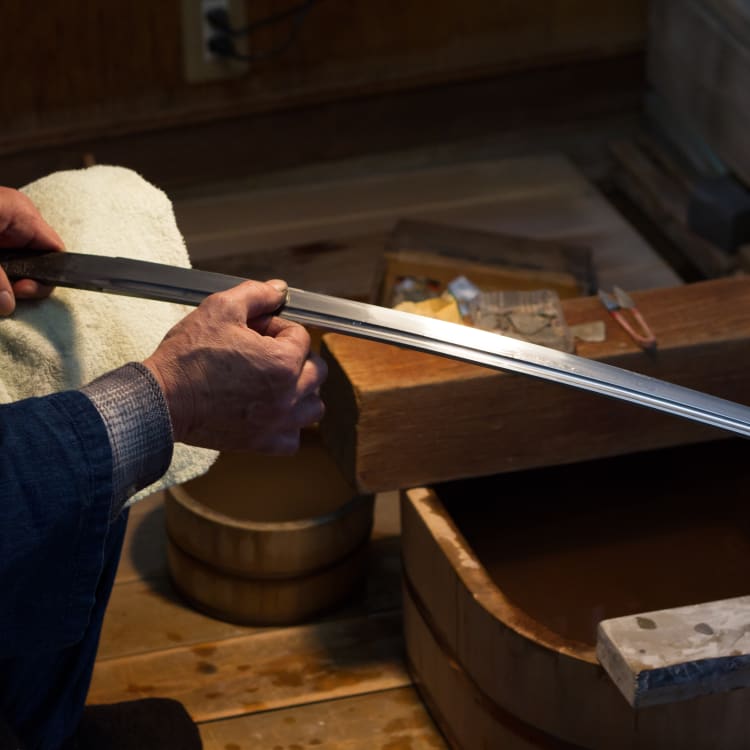
Things to do Samurai & Ninja
- Things to Do
- History in Japan
Top Recommendations
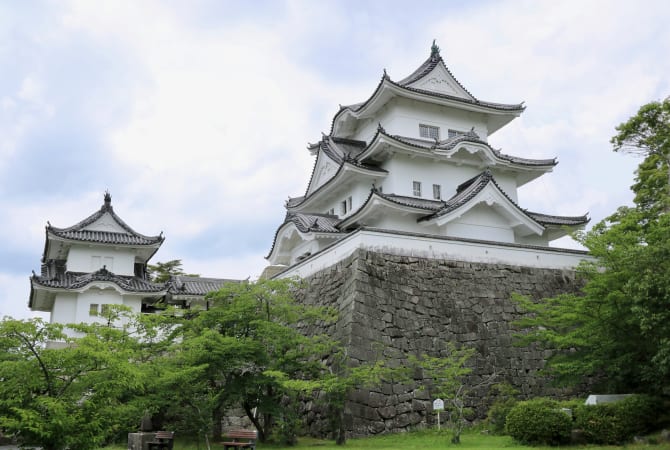
Please Choose Your Language
Browse the JNTO site in one of multiple languages
- Subscribe Digital Print

- Latest News
- Deep Dive Podcast
Today's print edition
Home Delivery
- Crime & Legal
- Science & Health
- More sports
- CLIMATE CHANGE
- SUSTAINABILITY
- EARTH SCIENCE
- Food & Drink
- Style & Design
- TV & Streaming
- Entertainment news
Shine and shadow: Unpacking favoritism in ‘Shogun’ and ‘House of Ninjas’

Hollywood has a samurai fetish. Whether it’s “Kill Bill,” “Westworld” or the acclaimed new FX remake of the “Shogun” miniseries, samurai often prove to be a one-way ticket to pop culture cool — and thus given a glamorous portrayal.
The entertainment world's differing representations of the two iconic figures, however, align with the true-to-life Japanese experience with the samurai and ninja: The former were the glitterati of the warrior class, decked in shiny armor and touting to the strict ethos of Bushido, and the ninja were seen as dishonorable.
Often emerging from lower socioeconomic backgrounds, a ninja’s role involved the darker arts of enemy neutralization — tasks that required a wardrobe for stealth, not boasting. An all-black attire enabled them to blend into the shadows, concretely and metaphorically, as the hidden movers of feudal intrigues.
There are, of course, plenty of pop culture representations where ninjas are portrayed favorably, from American franchises like “Teenage Mutant Ninja Turtles” ( it was announced last month that Paramount is developing the turtles' gritty comic miniseries, “The Last Ronin,” into a live-action film), and Japanese ones like “Naruto.”
Ninjas have also been frequently referenced in music, particularly in hip-hop, which is understandable as their minimalist approach embodies a raw, understated coolness. Their allure lies in their simplicity and effectiveness, making them a compelling emblem of stealth and danger.
But the esteemed samurai and the subordinate ninja largely persist — which is why it’s interesting having recently seen them battle for our attention in FX’s “Shogun” and Netflix’s “House of Ninjas.”
While the former is set in the 1600s, the latter, which stars Kento Kaku (who also directs, alongside American showrunner Dave Boyle), takes place in modern-day Tokyo — suggesting that ninjas still exist in Japan, essentially working as slaves for a secret government agency. Both series, whether it’s through the respect afforded to a historical drama or the underdog narratives given to a family one, wind up reflecting Japanese perceptions of their characters.
The sympathetic shinobi (ninja) family in “House of Ninjas” is tethered to a life dictated by unfulfillment, denied even the basic freedoms of choosing a lover — a contrast to the samurai class of “Shogun,” who enjoy the pleasures and spotlight of the nobility. All the while, the activities of the shinobi in “House of Ninjas” remain relegated to the shadows, literally. In fact, that’s one criticism of this otherwise well-made show: The fight scenes are often too dark to see.
Both series feature fine acting and nuanced characters, but the continued idealization of samurai and the sidelining of the ninjas highlight a cultural memory venerating a sort of testosterone-driven alpha elitism over much more sophisticated covert action.
To its credit, “House of Ninjas” includes self-satire, such as the employee at the secretive Bureau of Ninja Management who documents ninja portrayals in pop culture, media and entertainment — often seen playing with ninja figurines, reading comics and eating junk food. This character is also a misfit: a nerd tasked with observing a dishonorable figure. This suggests the show and its creators know that the ninja deserves better.
And “House of Ninjas” partially succeeds in elevating its subject. But the main characters are still walking through shadowy lives with heads hung low. The ninja will always remain somewhat of an underdog, which is part of their appeal. But Hollywood (and J-Hollywood) would benefit from focusing less on the popular kids, and giving the ninja their due.
It would be refreshing to see a dignified shinobi; not as government slaves, mutated turtles or outcast tweens. Hopefully, “House of Ninjas” is paving the way for that. While ninjas certainly are lethal, a fairer representation wouldn't hurt anyone — except, perhaps, the samurai.
The first season of “House of Ninjas” can be streamed on Netflix, and “Shogun” can be streamed on Disney+ in Japan.

In a time of both misinformation and too much information, quality journalism is more crucial than ever. By subscribing, you can help us get the story right.
site categories
India’s tata play and amazon prime collaborate to offer prime benefits to viewers.
- James Farr Upped As ‘Age Of Samurai’ Maker Cream Productions Expands Team With ‘Ghosting With Luke Hutchie And Matthew Finlan’ Exec
By Jesse Whittock
Jesse Whittock
International TV Co-Editor
More Stories By Jesse
- RJ Malishka, Rajesh Kumar & KC Shankar Latest To Land Key Roles In SonyLIV Political Drama Series ‘Freedom At Midnight’
- Nicely Entertainment Presenting Soap Opera Spoof ‘Ladies Of The ’80s: A Divas Christmas’ In Cannes

EXCLUSIVE: Canada’s Cream Productions has made some changes to its development team.
Veteran exec James Farr has been promoted to Executive Vice President of Development, and will lead a team comprising former Blue Ant Studios producer Zachary Frank, who has joined as Vice President of Development, and Jane Churchill-Smith, who has been upped to Director of Development.
Related Stories

'The Story Of Late Night' Showrunner John Ealer Joins Cream Productions
'the story of late night' producer cream productions launches green initiative, aims to be carbon negative this year.
In a decade-long spell at Cream, Farr is credited with developing the likes of Netflix series Age of Samurai , CNN’s History of the Sitcom , ABC series The Game Show Show and History Canada’s The World Without Canada . He also worked on shows such as ID’s Murder U and Fear Thy Neighbor , as well as Discovery+/Travel Channel series Eli Roth: A Ghost Ruined My Life .
He’ll continue to report directly to Cream CEO David Brady and President Kate Harrison Karman. Frank and Churchill-Smith will report to Farr.
Frank was most recently at Blue Ant, where he oversaw the development of CrimeTime’s A Secret To Die For served as executive producer for Ghosting with Luke Hutchie and Matthew Finlan for CBC Gem. In an earlier spell at Cream of nearly a decade, he developed the likes of Fear Thy Roommate , Eli Roth Presents: A Ghost Ruined My Life , Discovery’s I Got Lucky and ID limited series BTK: A Killer Among Us (ID).
Churchill-Smith began her career at Cream as a researcher on History of the Sitcom and has risen through the ranks at the development team.
“For well over a decade, James has been integral to Cream’s success and building our reputation for memorable content,” said Brady. “He’s an incredible developer with a keen eye for story and a steadfast dedication for unique access and IP. “We are excited to welcome Zachary back – he’s a longtime collaborator with strong roots in true crime and the ability to find and chase incredibly unique stories. We can’t wait to see his dynamic ideas come to life.”
Must Read Stories
Sydney sweeney ‘barbarella’ pic has edgar wright in talks to helm; writers eyed.

Inside The Upfront; Fall Sked; Renewals, Leary Comedy, New Series Trailers & More
Jake borelli leaving abc drama next season after seven years, kevin costner talks about his cannes western ‘horizon’ & ‘yellowstone’ rancor.
Subscribe to Deadline Breaking News Alerts and keep your inbox happy.
Read More About:
No comments.
Deadline is a part of Penske Media Corporation. © 2024 Deadline Hollywood, LLC. All Rights Reserved.

COMMENTS
Why Choose Samurai Tours? Our small group tours are well-balanced, educational, culturally-broadening, and most importantly, fun tours that inspire and inform. By breaking down as many barriers as possible to the lifestyle, customs and traditions of Japan and the Japanese, our tour members travel as " Temporary Japanese" allowing the ...
Hagi Castle stands in the middle of the town. Most of the castle was lost over the years, but you can still see the original foundation and stone walls. The rest is a reconstruction. In town, head to the Hagi Museum or Kuyama Art Museum where you can see authentic samurai swords, artifacts, and armor.
Samurai. Samurai Armour. The samurai (or bushi) were the warriors of premodern Japan. They later made up the ruling military class which eventually became the highest ranking social caste of the Edo Period (1603-1867). Samurai employed a range of weapons such as bows and arrows, spears and guns, but their main weapon and symbol was the sword.
Walking the Historic Nakasendo Samurai Trail. The cobblestone roads of the historic Nakasendo Route and the quaint Edo period (1603-1868) post towns of the Kiso Valley will make you feel like you have taken a step back in time to the age of the samurai. The Nakasendo, literally the central mountain route, was a mountainous inland route that ...
Samurai History & Culture Tours is an original and innovative tour plan and order-made samurai-centric tourism program offering authentic cultural pursuits, immersive experiences and the opportunity to discover, learn and experience a range of credible and legitimate samurai history and culture arts and elements while in Japan.
Samurai and ninja fans can truly immerse themselves in the history of Japan's medieval eras by being up-close to all the ancient and not-so-secret artefacts that the Kyoto Samurai and Ninja Museum holds, from legendary pieces of armour and weaponry to the commonplace objects and tools. Included is an impressive wall of swords or 'katana ...
Edo period Japan was crisscrossed by roads that connected various areas of the country to Edo (modern-day Tokyo), where the bakufu was based. Feudal lords were required to live part-time in the military capital, and they used this system of roadways to travel with their entourages—samurai included—between their home domains and Edo.
With few shops, people or powerlines in sight, travel back in time is possible in these three little-known (outside of Japan) samurai towns that have maintained their charm since Edo times (1603 ...
The castle, which was first built in 1384, had been destroyed in the process but was rebuilt in the 1960s. It has since been recognized as a symbol of the brave samurai who proudly fought until the very end. One distinctive feature to take notice of is its red-tiled roof, which is unusual for castles in Japan.
Learn the Ways of a Samurai at Shijimaya-Honpo Admire Japanese swords and learn of their deep-rooted history If you've ever wanted to experience what it's like to be a samurai, a visit to Shijimaya-Honpo is in order. At this historic shop located in the beautiful castle city of Kanazawa, you can experience local samurai culture to the fullest.
Bushido, also known as the way of the warrior, refers to the moral code of chivalry conducted by samurai. It can be divided into two separate words: Bushi which means samurai, and do which means a way. In general, it consists of the seven virtues below that should be followed by samurai: 義 (Gi) Justice. 勇 (Yu) Courage.
We have the perfect way to explore Japan. For those of you who wish to travel independently, these packages offer the perfect way to explore Japan. Use one of our packages as defined, or you can customize one of these packages to make it fit your specific interests and preferences. A little structure with a lot of flexibility may be the perfect ...
Kyoto samurai & ninja museum is an interactive experience way beyond a museum. It is more like a samurai village or samurai theme park with a free samurai history and zen lesson. By taking the tour and the experiences you will feel like a samurai for a day and travel back in time to the feudal Japan. You can visit there anytime between 10 am ...
In this excellent introduction to the Best of Japan, you won't miss anything the first-time visitor to Japan should see. 15 Days / 14 Nights. Max Tour Size : 12. Tokyo, Hakone, Nagoya, Takayama, Koya-san, Osaka, Himeji, Miyajima Island, Hiroshima, Kyoto, Fushimi, Tokyo (Optional Morning and Afternoon Food Tour), Nara (Optional Tour)
Path of the Samurai. Duration : 14 days. Locations : Tokyo, Kawaguchiko, Matsumoto, Takayama, Kanazawa, Kyoto. Add to favorites. This Japan tour will have you follow in the footsteps of the famous Japanese warriors. Dive into the heart of historical Japan at Matsumoto Castle with our guide Sylvain or into the treasures of Kyoto, the former ...
This cherry blossom festival is known as Kakunodate sakura matsuri. About 80 samurai families used to live in these samurai houses such as Aoyagi House (Aoyagi-ke), Iwashashi House, Odano Samurai House, Matsumoto Samurai House, Kawarada Samurai House and Ishiguro House (Ishiguro-ke). These six houses are open to tourists/public.
Here are a few reasons why you should pick Samurai Travel above other travel agencies in Japan. 1. Experience. Our staff has years of experience in the travel industry, and we've helped thousands of happy clients since 2016. 2. Affordable. We offer competitive pricing that is not only affordable but also feels premium due to our excellent ...
The Kakunodate samurai district, which once housed about 80 families, is one of the best examples of samurai architecture and housing in the country. Its wide streets and large courtyards are shaded by dozens of weeping cherry trees which bloom in early May. During this time, the wide streets are busy with hanami tourists.
The show, based on James Clavell's 1975 bestselling novel about Japan's violent feudal past, details the tug-of-war between rival lords vying to be the shōgun, (supreme military ruler) of Japan ...
From Sapporo to Nagasaki, you will enjoy the best Japan has to offer including some of Japan's best onsens, gardens, castles, natural scenic areas, historical districts, temples and shrines, cultural activities and much, much more in a tour that will create travel memories to last a lifetime. 22 Days / 21 Nights. Max Tour Size : 12.
Asakusa, located in central Tokyo, is a lively neighborhood known for its rich history and cultural attractions.With the famous Senso-ji Temple as its centerpiece, Asakusa offers a glimpse into traditional Japan through its bustling streets filled with souvenir shops and street food vendors.The area also boasts a diverse culinary scene, with plenty of classic Japanese eateries serving up local ...
When the top leadership left to travel in Europe and the United States to study Western ways in 1872, conservative groups argued that Japan should reply to Korean's refusal to revise a centuries old treaty with an invasion. ... With the exception of these few samurai outbreaks, Japan's domestic transformation proceeded with remarkable speed ...
To travel through Japan is to experience a myriad of emotions. It is the thrill of Osaka's culinary adventures, the meditative peace in Kyoto's bamboo forests, and the awe of Tokyo's skyscraper ...
Our FAQ is constantly being updated with more information and you can start here with regards to trip planning if you need tips, advice, or have questions about planning your travel to Japan. You can also join our Discord community, comment in our stickied weekly discussion thread, or check out r/JapanTravelTips for quick questions. Thank you!
Discover Samurai & Ninja. Get inspired for your Japan travel.
Hollywood has a samurai fetish. Whether it's "Kill Bill," "Westworld" or the acclaimed new FX remake of the "Shogun" miniseries, samurai often prove to be a one-way ticket to pop ...
Publisher Koei Tecmo and developer Omega Force have released Samurai Warriors 4 DX for PC via Steam for $49.99 worldwide, the company announced. ... 2019 in Japan, ... Travel Across the Land in ...
Farr's expanded role at the Age of Samurai: Battle for Japan producer will see him creating and developing programs for broadcast and cable nets, with a focus on true crime, history, pop culture ...
Irie (CEO of Samurai Partners) Comment from Toto, Co-Founder of SheisDAO,"After the resounding success of our previous after-party at Token 2049 Singapore, we are thrilled to replicate that ...